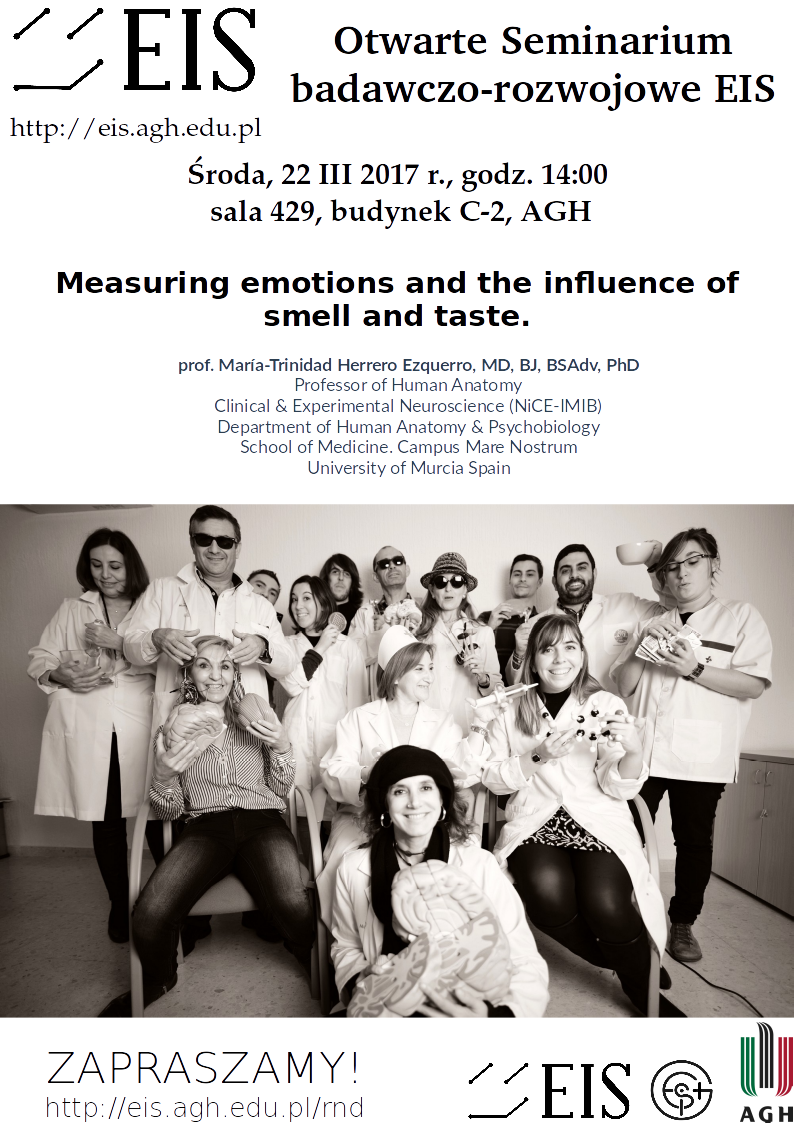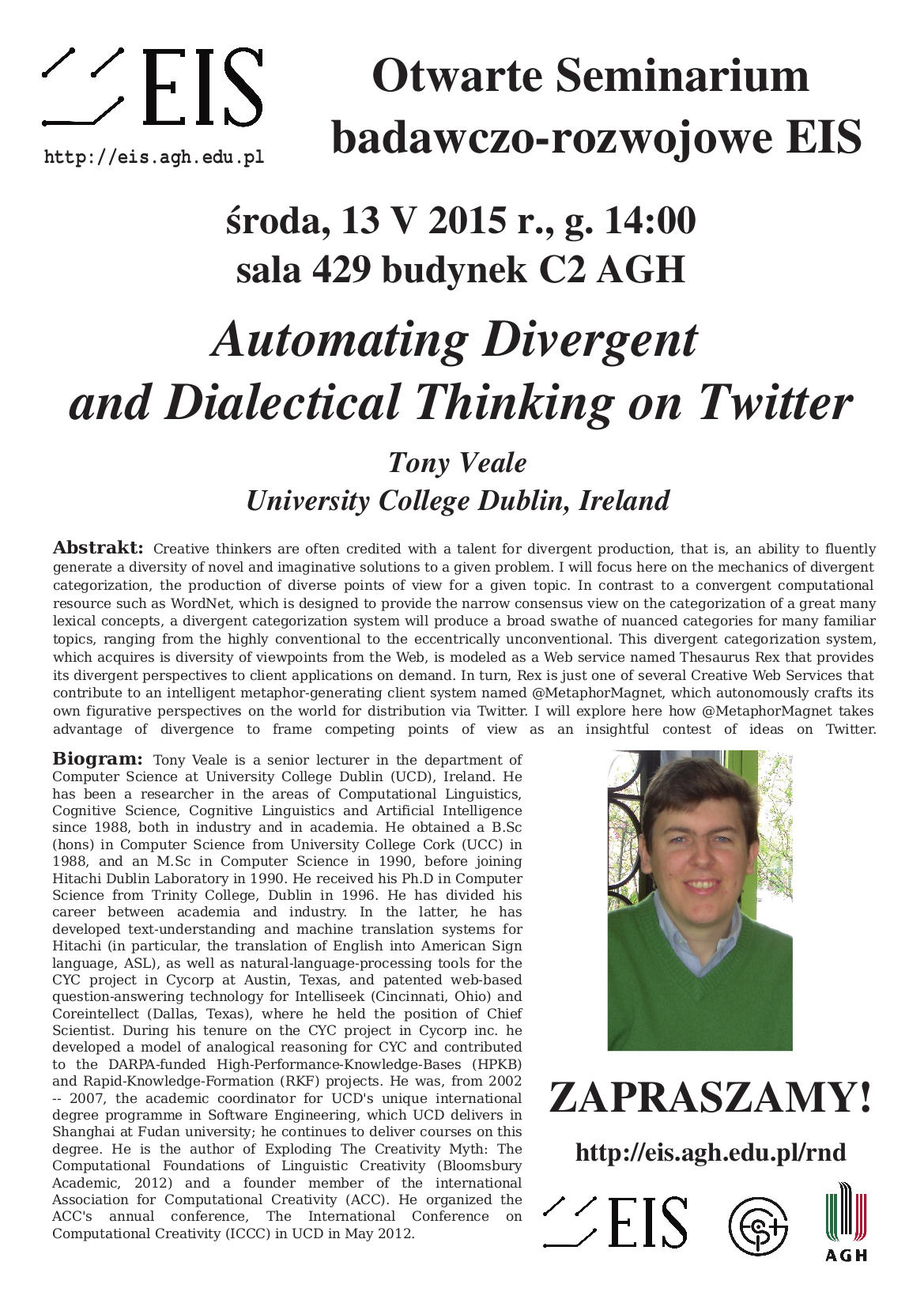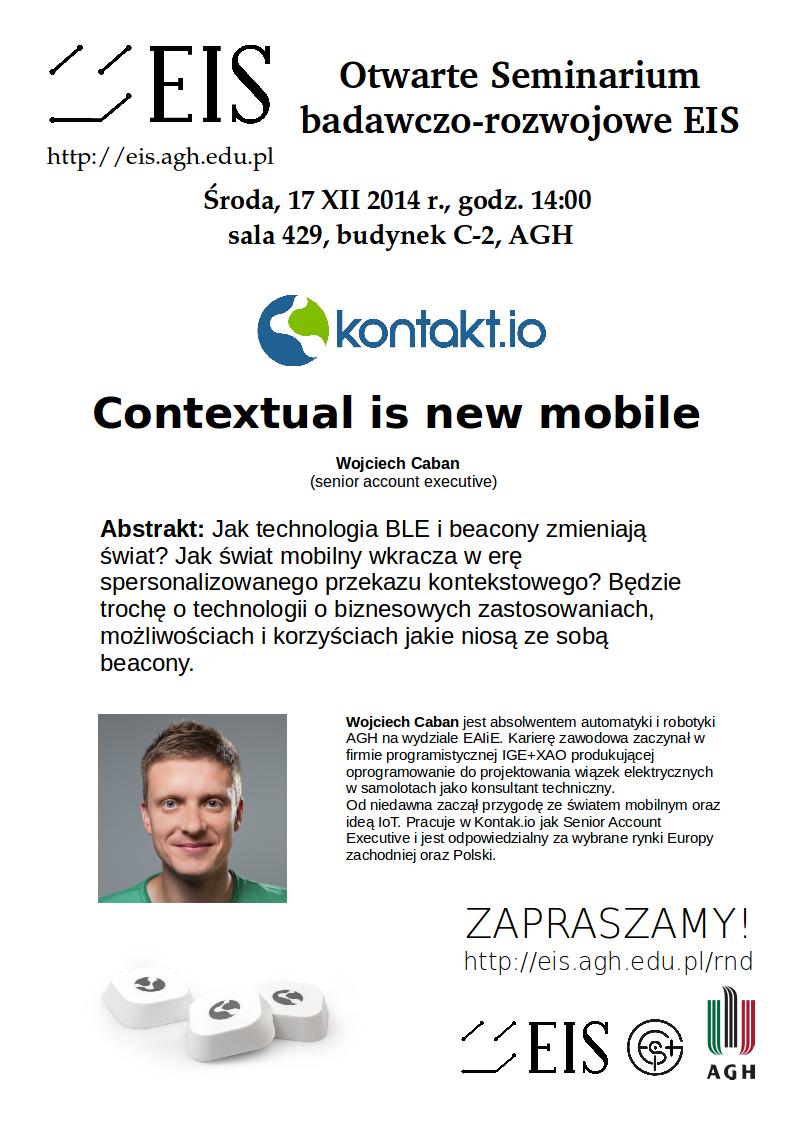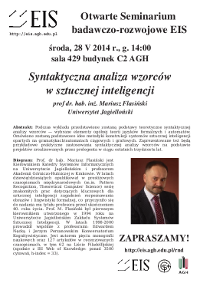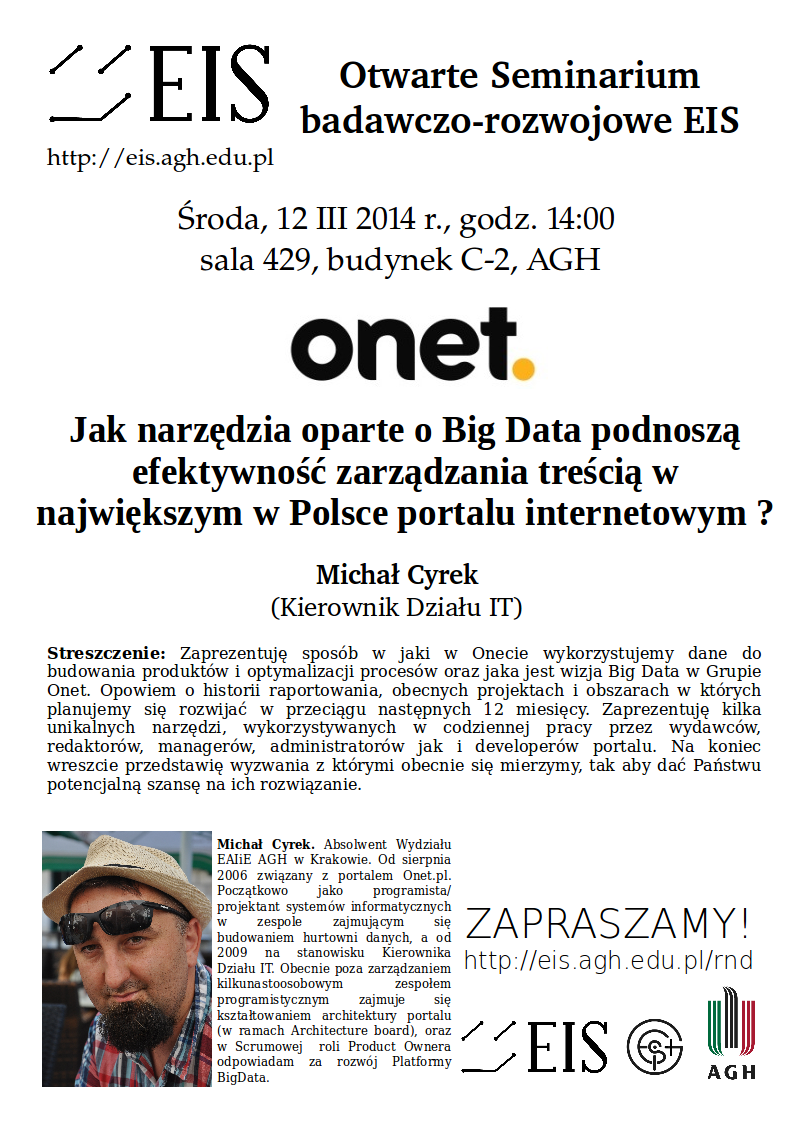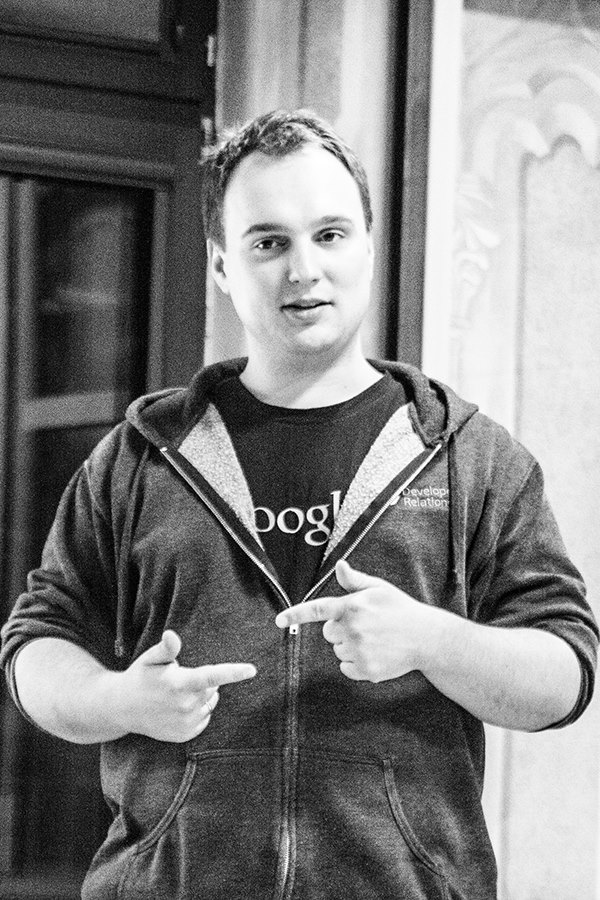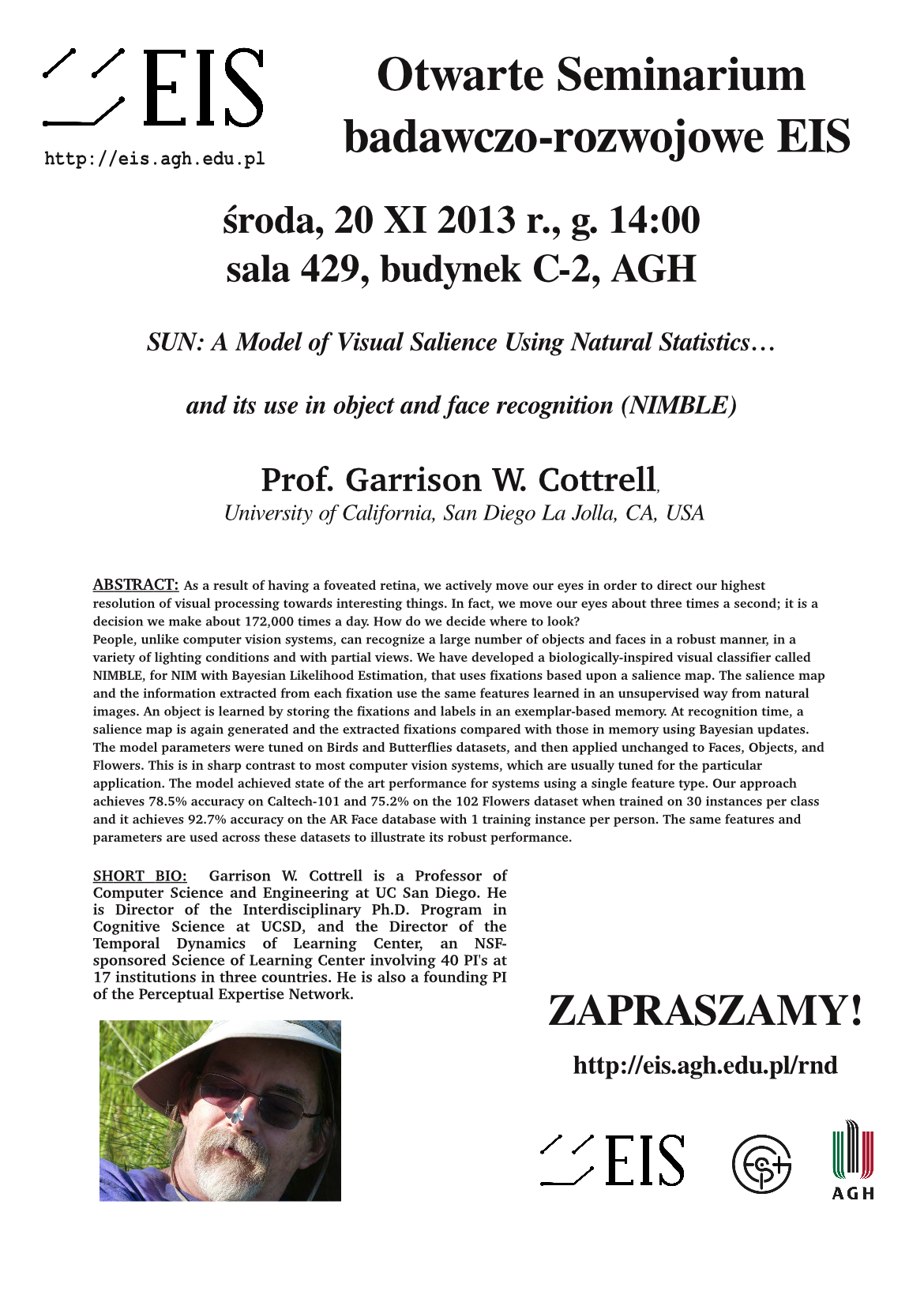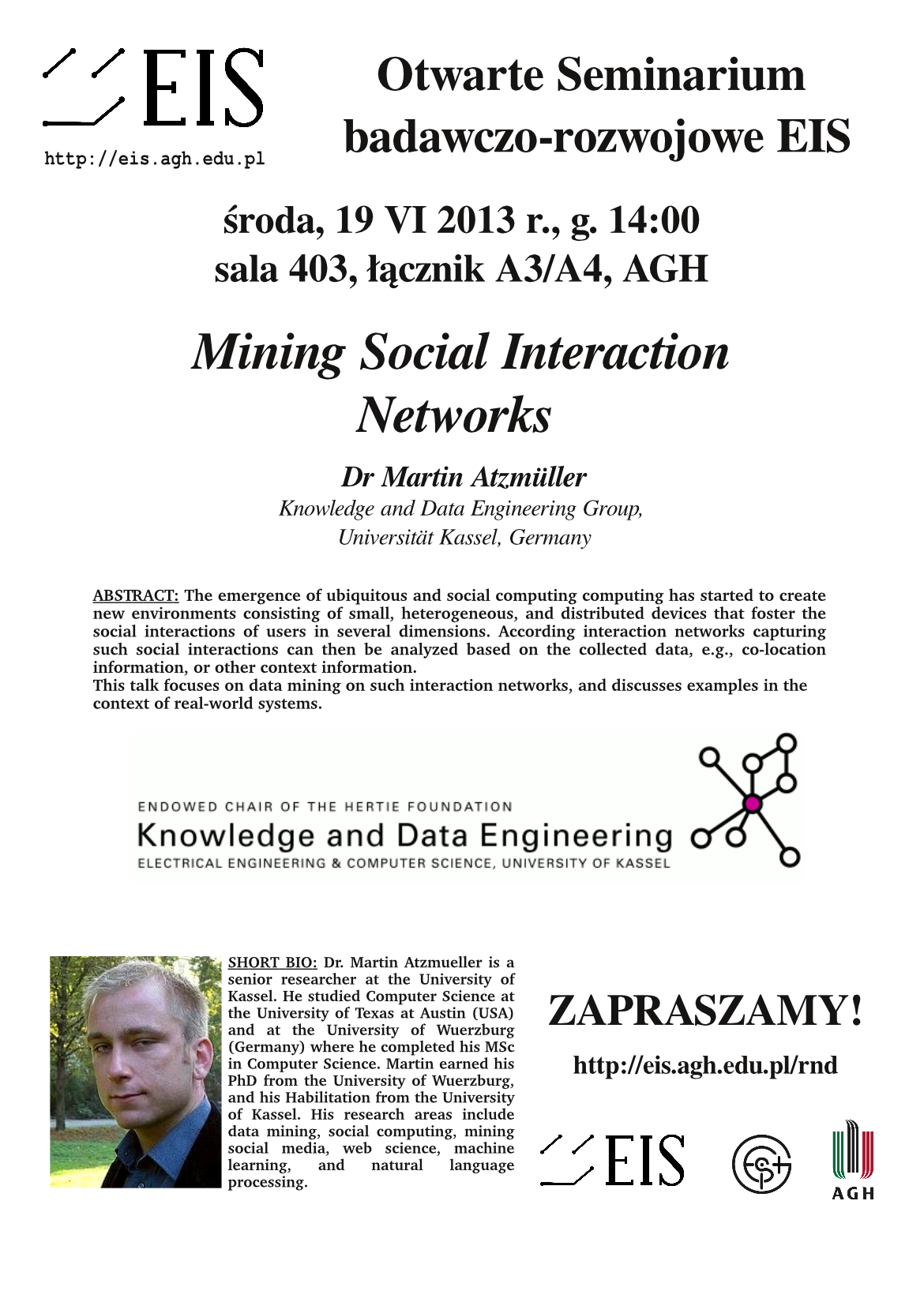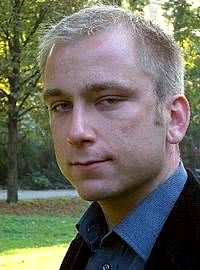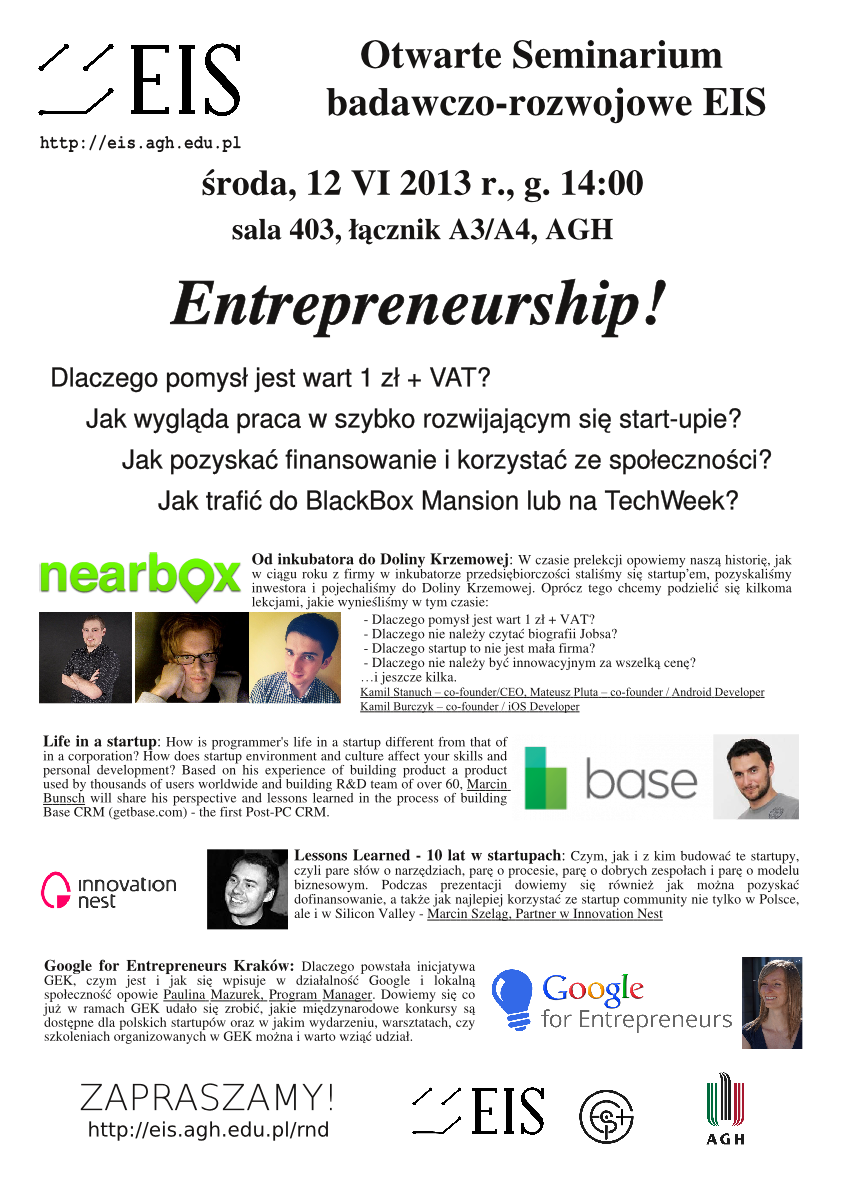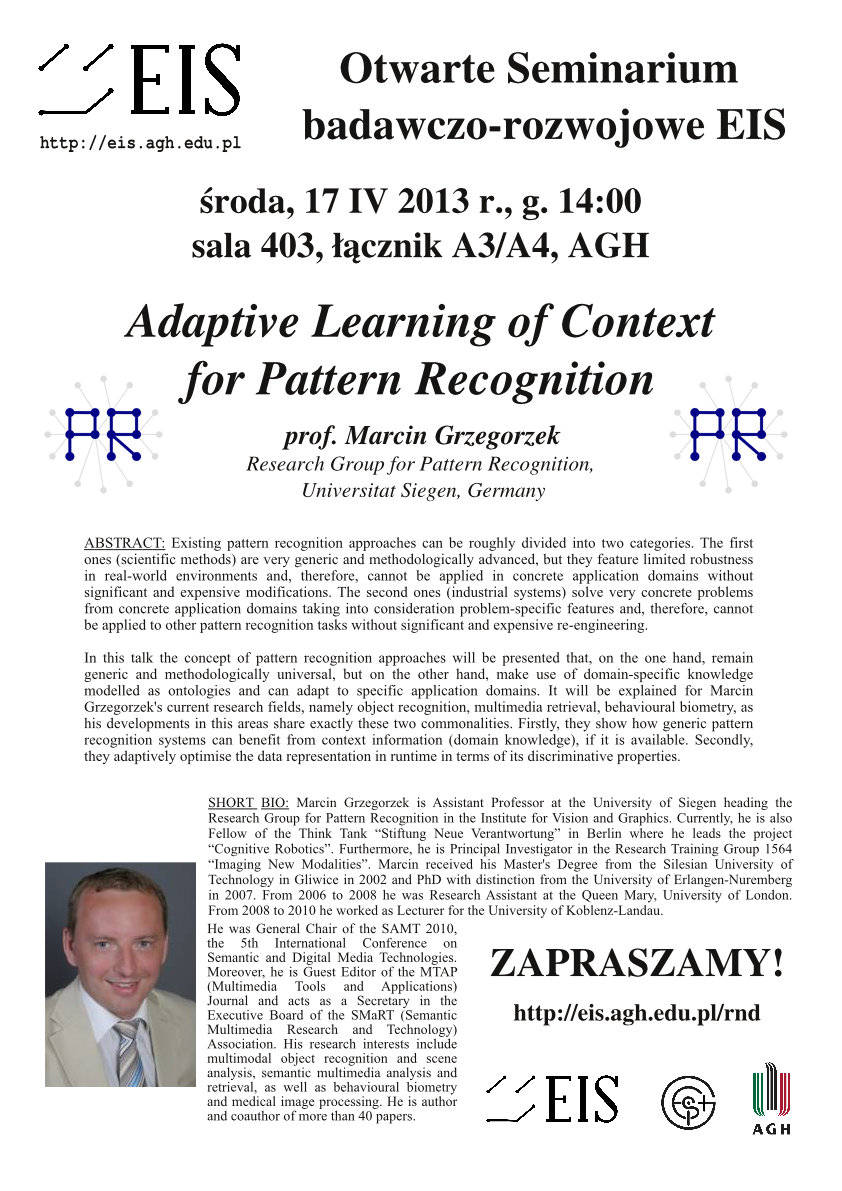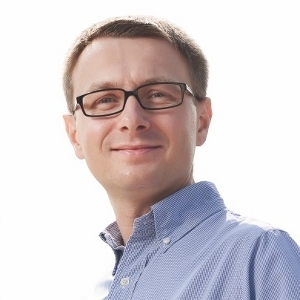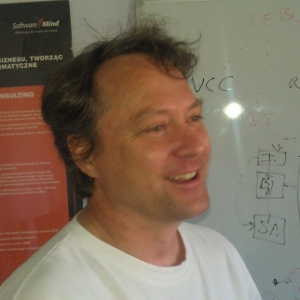Table of Contents
Seminarium badawczo-rozwojowe
Spotkania odbywają się wybrane środy, o godz. 14:00, w sali 429 w budynku C2 patrz: Mapa AGH
Terminy spotkań
Wiosna 2019
- 2019-02-27 EIS kick off
- 2019-02-13 omówienie WSHOP
- 2019-03-14 polecamy http://www.aimeetup.pl
- 2019-03-27 Sławomir Tadeja (Cambridge Uni.) Immersive Visual Analytics
Wiosna 2018
- 2018-03-07 EIS kick off
- 2018-03-14 EIS WSHOP - omówienie tematów
- 2018-03-28 Richard Lucas TedxKazimierz
Jesień 2017 - dodatkowe spotkania
- 2017-11-23 prof. Salvador Abreu, University of Évora, Portugalia
Wiosna 2017
- 2017-03-01 EIS kick off
- 2017-03-15 RnD: 2040.io Bartłomiej Rozkrut
- 2017-03-22 RnD: prof. María-Trinidad Herrero Ezquerro
- 2017-04-26 RnD: prof. Edyta Brzychczy, AGH
- 2017-05-31 Prezentacja propozycji tematów prac dyplomowych
- 2017-06-07 RnD: Piotr Przewrocki, QBN Fund
Wiosna 2016
Restrukturyzacja kursu.
- 2016-06-01 RnD: Miłosz Baluś, HG Intelligence
Wiosna 2015
2015-03-11 IDS2015-03-18 IDS2015-03-25 RnD2015-04-01 IDS2015-04-08 IDS2015-04-15 IDS- 2015-04-29
- 2015-05-06
Jesień 2014
2014-10-01 EIS kick off meeting2014-10-08 The Best of WSHOP 2014Q22014-10-15 lec2014-10-22 lec2014-10-29 lec2014-11-192014-12-17 RND: Kontakt.io - Context is new mobile
Wiosna 2014
2014-03-05 EIS kick off meeting2014-03-12 RND: Onet - Big Data2014-04-16 RND: Quantum
Jesień 2013
2013-10-02 EIS kick off meeting2013-10-23 IDS dr Stefan Florek2013-11-05 (wtorek godz. 14:00!) IDS Sidey Myoo: Rzeczywistość elektroniczna – od cienia w Jaskini Platona do interaktywnego interfejsu2013-11-12 (wtorek godz. 14:00!) IDS Sidey Myoo: Stygmat Turinga2013-11-26 (wtorek godz. 14:00!) IDS Sidey Myoo: Post i transhumanizm2013-12-11 IDS dr Stefan Florek: Ewolucja moralności2014-01-08 RND: WEBCON
Wiosna 2013
2013-02-27 EIS kick off meeting2013-03-13 RND: prezentacja Comarch2013-03-27 IDS: prof. J. Bremer2013-04-10 RND: prezentacja Software Mind2013-04-17 RND: prof. M. Grzegorzek2013-04-24 IDS: prof. J. Bremer2013-05-08 IDS: dr S. Kołodziejczyk2013-05-15 IDS: dr S. Kołodziejczyk2013-05-22 RND: Ericpol2013-06-05 IDS: dr S. Kołodziejczyk2013-06-12 RND: Entrepreneurship2013-06-19 RND: wykład zaproszony: dr Martin Atzmüller
Sylabusy
Spotkania RnD 2019
2019-03-27
Topic: Immersive Visual Analytics: Interacting With Data in the Virtual Reality (VR) Environment
Speakers: Sławomir Tadeja, University of Cambridge
Abstract: “Visual Analytics” is a term and research agenda coined by J.J. Thomas that combines two things: “interactive visual interfaces” with the “analytical reasoning” about the visualized data. Originally, the term concerned interactive 2D/3D visualizations offered by standard PC setup. However, recent advances and breakthroughs in the development of the so-called immersive interfaces such as Virtual Reality (VR) and Augmented Reality (AR), have spun off another branch of research i.e. immersive visual analytics (IVA). Immersive analytics tries to understand how the newest wave of these technologies can be leveraged and assist in creating even more compelling, more intuitive and more effective visual analytical tools.
The talk will focus on the VR-based visualizations. It will briefly discuss challenges and known issues related to the design of IVA tools i.e. (1) how to evaluate an IA visualization design, (2) how to mitigate the risks of the development of simulation sickness symptoms among the users, and (3) what are the available modes of interaction at the moment. Moreover, an example of how to leverage the VR environment to support real-life engineering design processes concerning aerospace turbomachinery design will be given.
Biogram
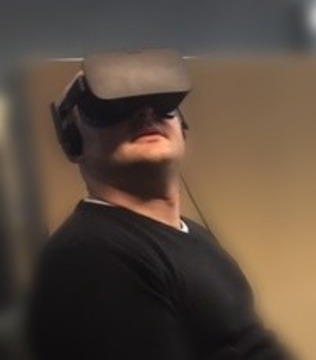 Sławomir joined the Engineering Department, University of Cambridge in October 2016 as a PhD researcher after receiving Licencjat and Magister degrees in Computer Science from the Jagiellonian University in Kraków. During his studies he has undertaken multiple internships including CERN, Microsoft, European Space Agency and Institute of Nuclear Physics PAN. He was also part of the Prof. Paweł Moskal Research Group working on Monte Carlo simulation of the SABAT System for underwater detection of dangerous substances; this work was presented at both University of Oxford and UN Climate Change Conference in Katowice. At Cambridge, he is part of the Intelligent Interactive Systems Group working under supervision of Dr Per Ola Kristensson. Sławomir works primarily within Scientific (SciVis) and Information Visualisation (InfoVis) on the interaction design for immersive visual analytics with the help of Virtual Reality (VR) head-mounted displays (HMDs) focusing on abstract data exploration and visualization. Sławomir's studies at Cambridge are supported by the Cambridge European and Trinity Hall Scholarship and the Engineering and Physical Sciences Research Council (EPSRC) UK.
Sławomir joined the Engineering Department, University of Cambridge in October 2016 as a PhD researcher after receiving Licencjat and Magister degrees in Computer Science from the Jagiellonian University in Kraków. During his studies he has undertaken multiple internships including CERN, Microsoft, European Space Agency and Institute of Nuclear Physics PAN. He was also part of the Prof. Paweł Moskal Research Group working on Monte Carlo simulation of the SABAT System for underwater detection of dangerous substances; this work was presented at both University of Oxford and UN Climate Change Conference in Katowice. At Cambridge, he is part of the Intelligent Interactive Systems Group working under supervision of Dr Per Ola Kristensson. Sławomir works primarily within Scientific (SciVis) and Information Visualisation (InfoVis) on the interaction design for immersive visual analytics with the help of Virtual Reality (VR) head-mounted displays (HMDs) focusing on abstract data exploration and visualization. Sławomir's studies at Cambridge are supported by the Cambridge European and Trinity Hall Scholarship and the Engineering and Physical Sciences Research Council (EPSRC) UK.
Spotkania RnD 2018
2018-06-06
Temat: Artificial Intelligence at PMI - Automating Business Processes in a Corporate Environment
Speakers:
- Debmalya Biswas, Lead Enterprise Architect
- Nicolas Correa, Manager IS
- Mateusz Lugowski, Solution Architecture Intern
- Vladyslav Melnyk, Solution Architect
Contents:
- Team Introduction
- Experiment #1 - 'Deep Learning based Natural Language Search'
In this talk, we will provide details of a Deep Learning based solution (DrQA) for Natural Language Search over factory machine manuals. The proposed architecture allows identifying the precise answer span corresponding to a query, which improves over the paragraph level answers enabled by pure statistical approaches. - Experiment #2 - 'Planogram - Shelf Compliance at Point of Sale'
In this talk we will provide details of a Deep Learning based solution for shelf compliance image recognition use-case at PMI Points-of-Sales (PoS). The experimental architecture consists of two stages, first one detects all positions on the shelf (empty positions, our and non PMI products). The second one is executing classification of detected positions and provides a type of each. System finds all PMI products and their types, non-PMI products, empty slots, counts them and verifies if everything is placed correctly due to PMI requirements. - Experiment #3 - 'Helpdesk Ticket Classification' \\ In this talk we will provide details about neural network based solution for helpdesk ticket classification. The experimental network architecture consists of a mix of fully connected layers on top of number of keyword occurrences and a stack of one dimensional convolutions over word vector embeddings for the whole text.
- Discussion & Closing
Speakers’ Biograms
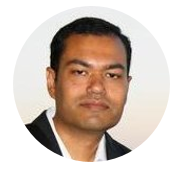 Dr. Debmalya Biswas is a Lead Enterprise Architect in the Information Services group at PMI, based in Lausanne, Switzerland. He has over 15 years’ experience working on a variety of technology areas, such as, AI, Big Data, Semantic Web, Information Retrieval, and Data Privacy. During this period, he has worked for leading technology companies such as Nokia, SAP, Oracle, Swisscom, Infosys, and the Swiss startup Iprova. He is the (co-)author of around 40 patents and 30 articles published in leading scientific conferences and journals. He holds a PhD in Computer Science from INRIA, France.
Dr. Debmalya Biswas is a Lead Enterprise Architect in the Information Services group at PMI, based in Lausanne, Switzerland. He has over 15 years’ experience working on a variety of technology areas, such as, AI, Big Data, Semantic Web, Information Retrieval, and Data Privacy. During this period, he has worked for leading technology companies such as Nokia, SAP, Oracle, Swisscom, Infosys, and the Swiss startup Iprova. He is the (co-)author of around 40 patents and 30 articles published in leading scientific conferences and journals. He holds a PhD in Computer Science from INRIA, France.
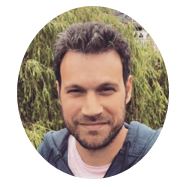 Nicolas Correa is a Lead ISE (Information Services Expert) in Artificial Intelligence, based in Krakow, Poland. He holds a Bachelor's degree of Computer Science at UADE (Universidad Argentina De la Empresa), with over 10 years of experience working at different multinational companies from different industries (Pricewaterhouse&Coopers, IBM, Avaya), providing a solid professional experience, mainly in Project Management by executing Telecoms and IT related projects supporting Leaf, Agronomy, ITS&P (Illicit Trade Strategy & Prevention), and Operations.
Nicolas Correa is a Lead ISE (Information Services Expert) in Artificial Intelligence, based in Krakow, Poland. He holds a Bachelor's degree of Computer Science at UADE (Universidad Argentina De la Empresa), with over 10 years of experience working at different multinational companies from different industries (Pricewaterhouse&Coopers, IBM, Avaya), providing a solid professional experience, mainly in Project Management by executing Telecoms and IT related projects supporting Leaf, Agronomy, ITS&P (Illicit Trade Strategy & Prevention), and Operations.
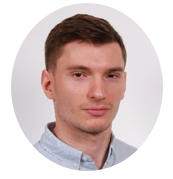 Mateusz Lugowski is an AI Solution Architect Intern in the Infromation Services group at PMI, based in Krakow, Poland. He has finished a BSc in Control Systems and Robotics at the AGH University of Science and Technology, and is pursuing a Master's degree in the same subject. Although his professional experience in the AI domain is quite short, he has been a hobbyist for some time, and applies his knowledge in commercial use cases in his current position.
Mateusz Lugowski is an AI Solution Architect Intern in the Infromation Services group at PMI, based in Krakow, Poland. He has finished a BSc in Control Systems and Robotics at the AGH University of Science and Technology, and is pursuing a Master's degree in the same subject. Although his professional experience in the AI domain is quite short, he has been a hobbyist for some time, and applies his knowledge in commercial use cases in his current position.
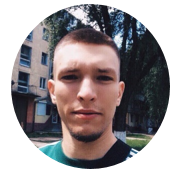 Vladyslav Melnyk is an AI Solution Architect in the Information Services group at PMI, based in Krakow, Poland. He has finished a Masters Computer Engineering degree in Lviv Polytechnic University in 2017. He has experience in providing AI solutions for logistics domain, he implemented various Deep Learning models and algorithms for Image Recognition and Computer Vision tasks. Beside this, he is very enthusiastic in all AI opportunities, likes to implement, extend, and apply latest research in deep learning.
Vladyslav Melnyk is an AI Solution Architect in the Information Services group at PMI, based in Krakow, Poland. He has finished a Masters Computer Engineering degree in Lviv Polytechnic University in 2017. He has experience in providing AI solutions for logistics domain, he implemented various Deep Learning models and algorithms for Image Recognition and Computer Vision tasks. Beside this, he is very enthusiastic in all AI opportunities, likes to implement, extend, and apply latest research in deep learning.
About PMI
Philip Morris International is a leading international tobacco company, with a diverse workforce of around 81,000 people. Our products are the choice of 150 million consumers worldwide, and for those who choose to continue to smoke, we will continue to offer them the best quality products. But that’s not where our vision for smokers ends. We’re dedicated to doing something very dramatic – replacing cigarettes with the smoke-free products that we’re developing and selling. That’s why we have a total of over 400 dedicated scientists, engineers, and technicians developing less harmful alternatives to cigarettes at our two Research & Development sites in Switzerland and Singapore. It’s the biggest shift in our history. This company transformation triggers demand for innovative IT solutions such as Artificial Intelligence & Machine Learning that will help us automate our business processes, releasing time & energy of our employees to focus on generating value to our customers and implementing our strategy towards smoke-free future.
Key facts about PMI:
- 81,000 employees around the world
- 400+ R&D scientists, engineers and technicians working on smoke-free products
- 180+ markets where our products are sold
Further information:
2018-04-25
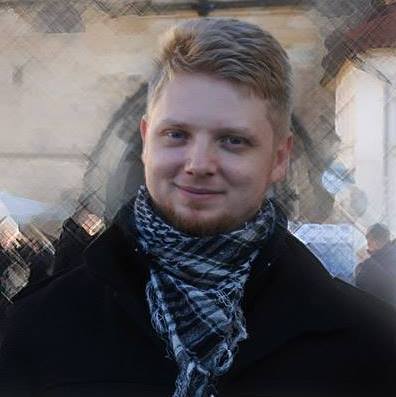 Gość: Augustyn Lorenc – specjalista ds. badań i rozwoju
Gość: Augustyn Lorenc – specjalista ds. badań i rozwoju
Temat: IoT i sztuczna inteligencja – jak poskromić technologię
Agenda:
- Potrzeby rynkowe
- Korzyści i zagrożenia zastosowania sztucznej inteligencji
- Projektowanie rozwiązań IoT – wyzwania i problemy
- Case study
- Trendy rozwoju rozwiązań IoT
Biogram
Dr inż. Augustyn Lorenc – przykład na połączenie nauki i biznesu. Od 2011 pracownik Instytutu Pojazdów Szynowych na Wydziale Mechanicznym Politechniki Krakowskiej. Od 2006 do 2015 roku freelancer, głównie współpracujący z warszawską agencją reklamy JM Group jako developer aplikacji internetowych. W 2012 roku prowadził własną firmę informatyczną pod Akademickim Inkubatorem Przedsiębiorczości. Od 2016 roku pracownik firmy SKK S.A. na stanowisku Specjalista ds. Badań i Rozwoju. Naukowo autor ponad 50 publikacji naukowych, recenzent czasopism krajowych i zagranicznych. Biznesowo analityk danych, zastępca kierownika projektu B+R realizowanego w SKK, rzeczoznawca SIMP, ekspert zewnętrzny NCBiR.
Na spotkaniu będzie również obecna HR Specialist SKK Amelia Dulko, która po prezentacji chętnie odpowie na Wasze pytania dotyczące rekrutacji. Będzie również możliwość, już indywidualnie, skonsultowania swojego CV pod kątem jego poprawności.
O SKK S.A.
SKK S.A. - Jesteśmy firmą technologiczną, ekspertami w zakresie nowych technologii. Od 25 lat doradzamy, jak usprawniać logistykę, produkcję i handel. Specjalizujemy się w produkcji oprogramowania logistycznego, wdrażania technologii automatycznej identyfikacji, tworzeniu nowoczesnych systemów znakowania, projektowaniu i instalowaniu dedykowanych rozwiązań sieciowych. Od początku istnienia firmy koncentrujemy się na wdrażaniu innowacyjnych rozwiązań, których celem jest optymalizacja i automatyzacja pracy.
2018-03-28
 Gość: Richard Lucas, Cambentrepreneurs TEDxKazimierz
Gość: Richard Lucas, Cambentrepreneurs TEDxKazimierz
Temat: The “One hour MBA” workshop
Abstrakt: What everyone should know if they are thinking of starting or investing in a business. Richard has set up more than 25 businesses, some of which have succeeded and many of which have failed. This workshop will be valuable anyone who is wondering if a career in business is for them, and may save you millions of zloty if you learn from Richard's mistakes.
Biogram: Richard Lucas is a business and social entrepreneur. He supports the existing businesses he has invested in and/or led - which in all have over 500 employees in Europe, the USA and Asia and invests in new companies from time to time.
He founded Cambentrepreneurs to support entrepreneurship among the students and alumni of Cambridge University worldwide, and actively supports the pro- enterprise eco-system, mainly in the UK and Poland, with initiatives like Krakow Enterprise Mondays, Open Coffee Krakow, the Project Kazimierz podcast and the richardlucas.com blog. He is active in the TED and TEDx Community, holding the Licence for TEDxKazimierz.
He is responsible for the global Wojtek the Soldier Bear initiative about which he gave a TEDxKrakow talk, and led the project to put a statue in Park Jordana in Krakow. He is one of the co- founders of Krakow Standup Comedy, and was part of Free Festival at the Edinburgh Fringe in 2017. He is a speaker and MC/host at events with a primary focus on entrepreneurship and leadership.
He was granted Polish citizenship in 2017 and received a ProMemoria medal from “Urząd do Spraw Kombatantów i Osób Represjonowanych” for his “Wojtek the Soldier Bear” project from Krzysztof Strzałka, Polish Consul General in Milan
Spotkania RnD 2017
2017-11-23
 Gość: prof. Salvador Abreu, University of Évora, Portugalia
Gość: prof. Salvador Abreu, University of Évora, Portugalia
Temat: Parallel Cooperative Hybrid Metaheuristics: some results and trends
Abstrakt: Finding an optimal solution to some combinatorial optimisation problems is computationally very difficult, for many useful instances. The best results are obtained with hybrid heuristics, which normally require very complex solvers. We propose an alternate solution where hybridization is obtain by means of parallelism and cooperation between simple singleheuristic solvers.
Biogram: Salvador Abreu: Salvador Abreu is full professor at the Computer Science department of the University of Évora (Portugal). He holds a Habilitation (Agregação) in Computer Science from the University of Évora (2009), a PhD in Computer Science from Universidade Nova de Lisboa (UNL, 1994) as well as degree in Informatics Engineering, also from UNL (1987). He is presently director of the Laboratory for Informatics, Systems and Parallelism of the Universities of Évora, Beira Interior and the Algarve and Head of the Scientific Council of the School of Science and Technology of the University of Évora.
Previously, he held several positions at the University of Évora, including that of pro-rector for information technology, director of Computing Services, head of the Computer Science Department, head of the Exact Sciences Departmental Area and director of the BSc and PhD programs in Informatics Engineering and Computer Science.
His research interests include Programming Language Design and Implementation, Parallel and Distributed Computing, Declarative Programming Languages and Tools. Logic Programming is seen as the basis for the development of tools and applications, namely for organizational information systems. He is active in the Logic Programming and Constraints research communities, having organized or served in the program committees of various conferences.
2017-06-07
 Gość: Piotr Przewrocki, QBN Fund
Gość: Piotr Przewrocki, QBN Fund
Temat: Startup - alternatywna ścieżka kariery
Abstrakt: Finansowanie projektów badawczo-rozwojowych na przykładzie Publico24 Digital Newsstand.
2017-04-26
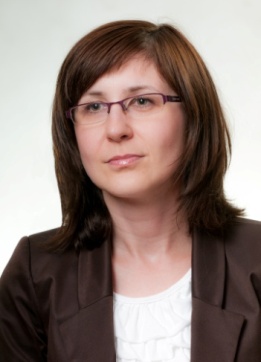 Gość: Dr hab. inż. Edyta Brzychczy, prof. AGH
Gość: Dr hab. inż. Edyta Brzychczy, prof. AGH
Temat: Inteligentne narzędzia projektowania w górnictwie? Tak, to możliwe!
Abstrakt: Projektowanie procesu wydobywczego w kopalniach podziemnych jest zagadnieniem trudnym i złożonym z uwagi na:
- ograniczenia wynikające z warunków geologicznych zalegania złoża i jego zasobności oraz zagrożeń naturalnych nie występujących w innych branżach przemysłu,
- wymagania wynikające z potrzeby doprowadzenia odpowiedniej ilości powietrza do miejsc pracy pod ziemią, siecią wyrobisk stanowiących złożoną infrastrukturę podziemną,
- specyficzne rodzaje niepewności i ryzyka, istotnie wpływające na kształt i ocenę tworzonych rozwiązań projektowych.
Warunki prowadzenia podziemnej działalności górniczej coraz częściej skłaniają decydentów do poszukiwania nowoczesnych narzędzi wspomagających projektowanie. Narzędzia te powinny efektywnie wykorzystywać wiedzę o procesie wydobywczym a także umożliwiać modelowanie i optymalizację złożonych wariantów rozwiązań z uwzględnieniem aspektu niepewności i ryzyka. Przykładem narzędzi projektowania, które wpisują się w powyższe wymagania są inteligentne systemy wspomagania decyzji.
W wystąpieniu przedstawione zostaną wyniki prac prowadzonych w tym zakresie na Wydziale Górnictwa i Geoinżynierii AGH, w Katedrze Ekonomiki i Zarządzania w Przemyśle.
2017-03-22
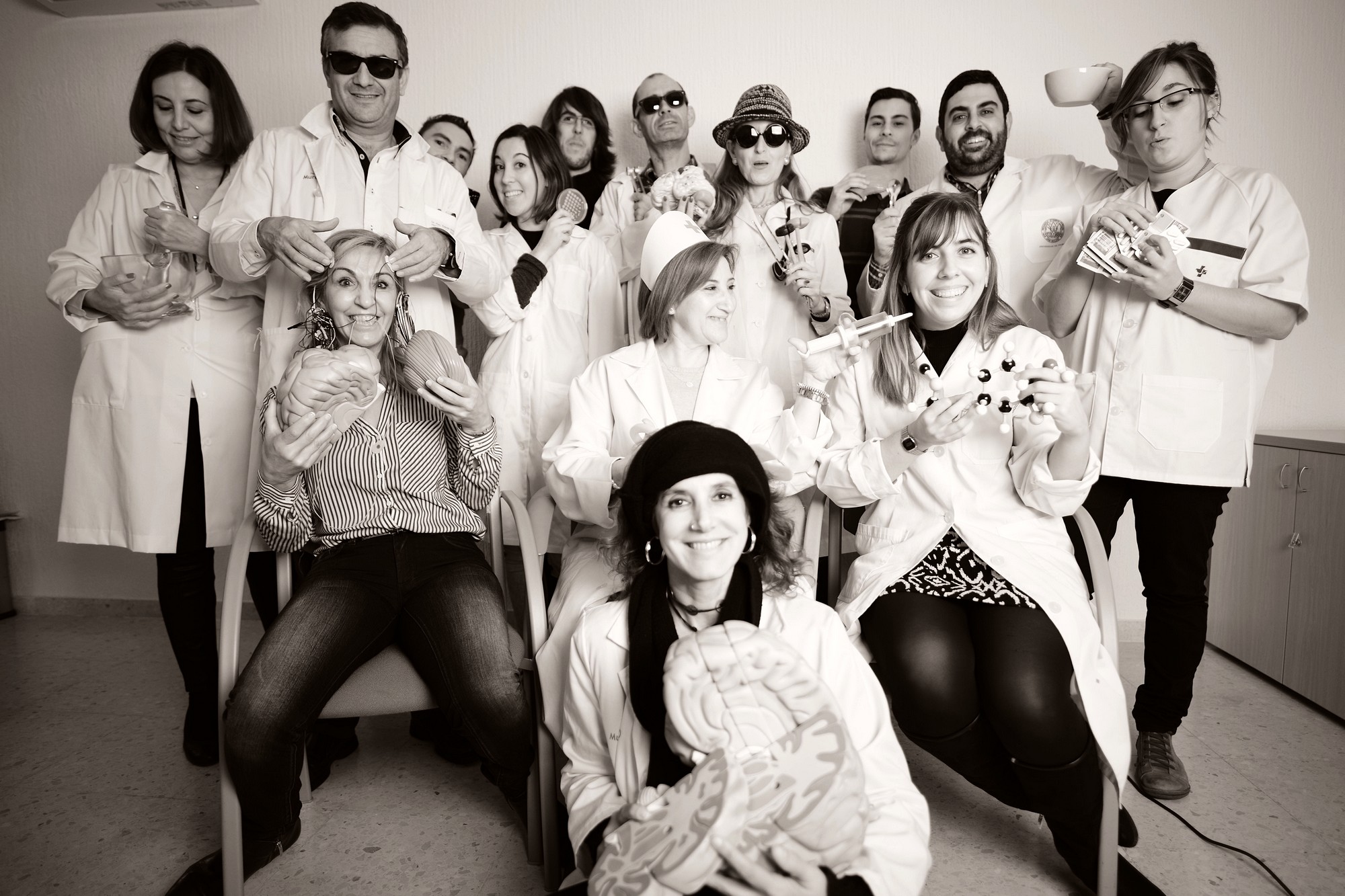 Gość: prof. María-Trinidad Herrero Ezquerro, MD, BJ, BSAdv, PhD
Gość: prof. María-Trinidad Herrero Ezquerro, MD, BJ, BSAdv, PhD
Temat: Measuring emotions and the influence of smell and taste.
Prof. María-Trinidad Herrero Ezquerro, MD, BJ, BSAdv, PhD is a Professor of Human Anatomy Clinical & Experimental Neuroscience (NiCE-IMIB) at Department of Human Anatomy & Psychobiology School of Medicine. Campus Mare Nostrum University of Murcia Spain
2017-03-15
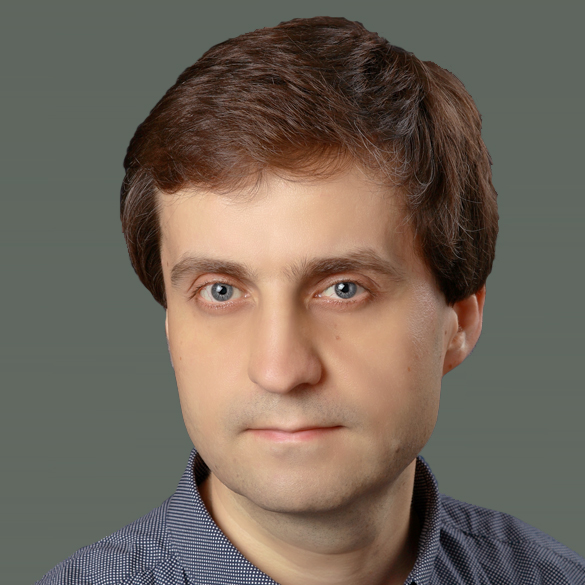 Gość: Bartłomiej Rozkrut, współzałożyciel 2040.io
Gość: Bartłomiej Rozkrut, współzałożyciel 2040.io
Temat: Edward.ai: Jak tworzymy inteligentnego asystenta dla działów sprzedaży.
Abstrakt:
- Gdzie jesteśmy jako branża i jakie istotne zmiany czekają nas w najbliższym czasie?
- Jakie problemy rozwiązujemy w 2040.io.
- Jakie wyzwania napotykamy na swojej drodze?
- Jakie sobie z nimi radzimy?
Spotkania RnD 2016
2016-06-01
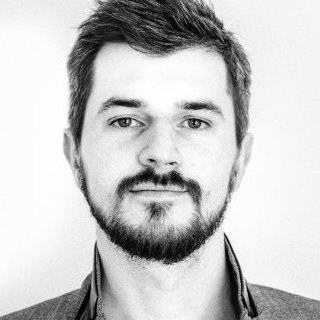 Gość: Miłosz Baluś, CTO & co-founder of HG Intelligence
Gość: Miłosz Baluś, CTO & co-founder of HG Intelligence
Temat: Ewolucja Big Data & Hadoop w HG Intelligence
Abstrakt: Case Study użycia technologii tj. HBase, Elasticsearch, Spark, Kafka, Zookeepers, Node.js oraz architektury rozproszonej opartej na mikroserwisach.
- Wprowadzenie. Czym jest Synerise?
- Podstawowe wymagania biznesowe stawiane ekosystemowi.
- Jak w czasie rzeczywistym przetwarzać dane heterogeniczne pochodzące z różnych źródeł?
- Na drodze do doskonałości.
- Sukcesy i porażki.
- Plany na przyszłość i technologiczna TODO lista.
Spotkania RnD 2015
2015-05-13
 Gość: Tony Veale, University College Dublin, Ireland
Gość: Tony Veale, University College Dublin, Ireland
Temat: Automating Divergent and Dialectical Thinking on Twitter
Abstrakt: Creative thinkers are often credited with a talent for divergent production, that is, an ability to fluently generate a diversity of novel and imaginative solutions to a given problem. I will focus here on the mechanics of divergent categorization, the production of diverse points of view for a given topic. In contrast to a convergent computational resource such as WordNet, which is designed to provide the narrow consensus view on the categorization of a great many lexical concepts, a divergent categorization system will produce a broad swathe of nuanced categories for many familiar topics, ranging from the highly conventional to the eccentrically unconventional. This divergent categorization system, which acquires is diversity of viewpoints from the Web, is modeled as a Web service named Thesaurus Rex that provides its divergent perspectives to client applications on demand. In turn, Rex is just one of several Creative Web Services that contribute to an intelligent metaphor-generating client system named @MetaphorMagnet, which autonomously crafts its own figurative perspectives on the world for distribution via Twitter. I will explore here how @MetaphorMagnet takes advantage of divergence to frame competing points of view as an insightful contest of ideas on Twitter.
Biogram: Tony Veale: Tony Veale is a senior lecturer in the department of Computer Science at University College Dublin (UCD), Ireland. He has been a researcher in the areas of Computational Linguistics, Cognitive Science, Cognitive Linguistics and Artificial Intelligence since 1988, both in industry and in academia. He obtained a B.Sc (hons) in Computer Science from University College Cork (UCC) in 1988, and an M.Sc in Computer Science in 1990, before joining Hitachi Dublin Laboratory in 1990. He received his Ph.D in Computer Science from Trinity College, Dublin in 1996. He has divided his career between academia and industry. In the latter, he has developed text-understanding and machine translation systems for Hitachi (in particular, the translation of English into American Sign language, ASL), as well as natural-language-processing tools for the CYC project in Cycorp at Austin, Texas, and patented web-based question-answering technology for Intelliseek (Cincinnati, Ohio) and Coreintellect (Dallas, Texas), where he held the position of Chief Scientist. During his tenure on the CYC project in Cycorp inc. he developed a model of analogical reasoning for CYC and contributed to the DARPA-funded High-Performance-Knowledge-Bases (HPKB) and Rapid-Knowledge-Formation (RKF) projects. He was, from 2002 – 2007, the academic coordinator for UCD's unique international degree programme in Software Engineering, which UCD delivers in Shanghai at Fudan university; he continues to deliver courses on this degree. He is the author of Exploding The Creativity Myth: The Computational Foundations of Linguistic Creativity (Bloomsbury Academic, 2012) and a founder member of the international Association for Computational Creativity (ACC). He organized the ACC's annual conference, The International Conference on Computational Creativity (ICCC) in UCD in May 2012.
2015-04-22
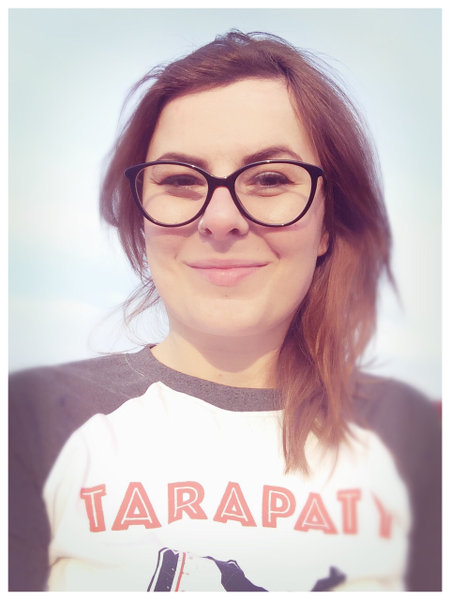
Goście: Anna Uba (Head of Project Management) i Krzysztof Maziarka (Head of Technology) w firmie HG Intelligence
Temat: Analityka biznesowa w IT - jak analizować i budować software aby przynosił korzyści
Abstrakt: Każdy biznes działa w jakimś ekosystemie. Analityka Biznesowa odpowiada za identyfikację „Co” trzeba zrobić aby osiągnąć założony „Cel” lub „Zmianę”. Prezentacja poruszy temat zbierania i definiowania wymagań do tworzonego oprogramowania tak, aby minimalizować sytuacje w których developerzy robią coś, co niekoniecznie ma sens zarówno dla nich (just do IT!) jak i dla biznesu. Słuchacze dowiedzą się, jak w kilku prostych krokach zweryfikować, czy rozwiązanie ma sens dla biznesu, czy przyniesie korzyści. Poznają podstawowe techniki i założenia analityki biznesowej oraz będą mogli dowiedzieć się jak zostać Analitykiem w IT i czym różni się ta rola od roli Project Managera czy Product Ownera.
Biogram: Anna Uba: Analityk systemów informacyjnych, product owner, konsultant komunikacji w mediach społecznościowych, motocyklistka. Od 2007 roku pracująca w branży internetowej m.in dla Grupy ONET.PL SA, Eskadry Opcom, TVN S.A obecnie w HG Intelligence. Pasjonatka zwinnych metodologii zarządzania projektami IT
2015-03-04

Speaker: Dr. Michał Klincewicz, Berlin School of Mind and Brain, Humboldt-Universität zu Berlin
Title: Studying the mind with computing technology: eyetracking and SOAR
Abstract: In this talk I will explore how methods and technologies from advanced computing can drive testable hypotheses. I will use two examples: SOAR and eyetracking, to demonstrate fruitful interaction between computer science, psychology, and philosophy in or attempts to understand some of the most pressing and difficult aspect of mind. Eyetracking depends on sophisticated algorithms and sensors to measure the direction and duration of gaze. SOAR, on the other hand, gives us the ability to model sophisticated reasoning patterns.
Bio: Dr. Michał Klincewicz is an American philosopher of mind and a cognitive scientist. He is currently a post-doctoral researcher in the Berlin School ofMind and Brain, Humboldt-Universität zu Berlin. He finished his Ph.D. in the Graduate Center of the City University of New York, under advisement from David M. Rosenthal, writing on the unity of consciousness over time. His current research interests engage all aspects of mental time, including time perception, memory, and the conscious experience ofduration and change. On his view, scientifically informed philosophy will soon be able to answer some of the deepest questions we currently have about the nature of temporal experience and perhaps also shed light on the relationship between mental time and physical time. A distinct line of Klincewicz’s research concerns the development and deployment of autonomous weapon systems. Such systems present unique moral problems, but also technical challenges that can be overcome only by interdisciplinary work in cognitive science.
2015-01-28

Speaker: Dr. Joachim Baumeister
Title: Life around the Bottleneck - Why Knowledge Engineering still is Software Engineering and why AI should care.
Abstract: In the last years many industrial domains introduced technologies for collecting mass data and established standardized procedures to handle the data. Besides the development of Big Data methods we see a revival of AI methods for intelligent processing, the semantification, and the integration of the gathered data. Knowledge engineering techniques are needed to accomplish the tasks. The talk will summarize Knowledge Engineering history from a personal perspective and will motivate its strong dependencies to general Software Engineering research. I will demonstrate the use of current key techniques by industrial systems.
Bio: Dr. Baumeister did his PhD in Applied Artificial Intelligence in 2004 in Wurzburg, Germany, and habilitated on Knowledge Engineering techniques in 2010. He gives lectures on Knowledge-Based Systems and Semantic Web Technologies. He authored and co-authored more than 100 reviewed publications in the field of Knowledge-based Systems and the Semantic Web. Since 2010, he is fully working at the company denkbares GmbH, where semantic information systems and knowledge systems are designed and implemented in industrial settings.
Spotkania RnD 2014
2014-12-17

Gość: Wojciech Caban, Senior Account Executive w firmie Kontakt.io
Temat: Contextual is new mobile
Abstrakt: Jak technologia BLE i beacony zmieniają świat? Jak świat mobilny wkracza w erę spersonalizowanego przekazu kontekstowego? Będzie trochę o technologii o biznesowych zastosowaniach, możliwościach i korzyściach jakie niosą ze sobą beacony.
Biogram: Wojciech Caban jest absolwentem automatyki i robotyki AGH na wydziale EAIiE. Karierę zawodowa zaczynał w firmie programistycznej IGE+XAO produkującej oprogramowanie do projektowania wiązek elektrycznych w samolotach jako konsultant techniczny. Od niedawna zaczął przygodę ze światem mobilnym oraz ideą Internet of Things. Pracuje w Kontak.io jak Senior Account Executive i jest odpowiedzialny za wybrane rynki Europy zachodniej oraz Polski.
2014-05-28
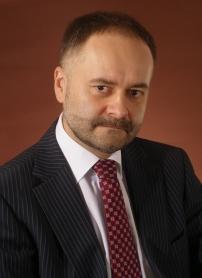
Gość: prof dr. hab. inż. Mariusz Flasiński, Uniwersytet Jagielloński
Temat: Syntaktyczna analiza wzorców w sztucznej inteligencji
Abstrakt: Podczas wykładu przedstawione zostaną podstawy teoretyczne syntaktycznej analizy wzorców – wybrane elementy ogólnej teorii języków formalnych i automatów. Omówione zostaną podstawowe idee metodyki konstrukcji systemów sztucznej inteligencji opartych na gramatykach/automatach ciągowych i grafowych. Zaprezentowane też będą przykładowe praktyczne zastosowania syntaktycznej analizy wzorców na podstawie projektów zrealizowanych przez prelegenta w ciągu ostatnich trzydziestu lat.
Biogram: Prof. dr hab. Mariusz Flasiński jest Kierownikiem Katedry Systemów Informatycznych na Uniwersytecie Jagiellońskim i profesorem Akademii Górniczo-Hutniczej w Krakowie. W latach dziewięćdziesiątych opublikował w prestiżowych czasopismach międzynarodowych (m.in. Pattern Recognition, Theoretical Computer Science) serię znakomitych prac dotyczących kluczowych dla sztucznej inteligencji zagadnień rozpoznawania obrazów i lingwistyki formalnej, co przyczyniło się do nadania mu tytułu profesora przed ukończeniem 40. roku życia. Prof. M. Flasiński był pierwszym kierownikiem utworzonego w 1994 roku na Uniwersytecie Jagiellońskim Zakładu Systemów Sztucznej Inteligencji. W latach 1998-2000 prowadził wspólnie z profesorami: Edwardem Nęcką i Jerzym Perzanowskim Konwersatorium Kognitywistyczne. Jest autorem pięciu monografii naukowych oraz 127 artykułów w recenzowanych czasopismach, w tym 62 na Liście Filadelfijskiej (zgodnie z ISI Web of Knowledge: ponad 3500 cytowań, h-index – 33).
2014-05-21
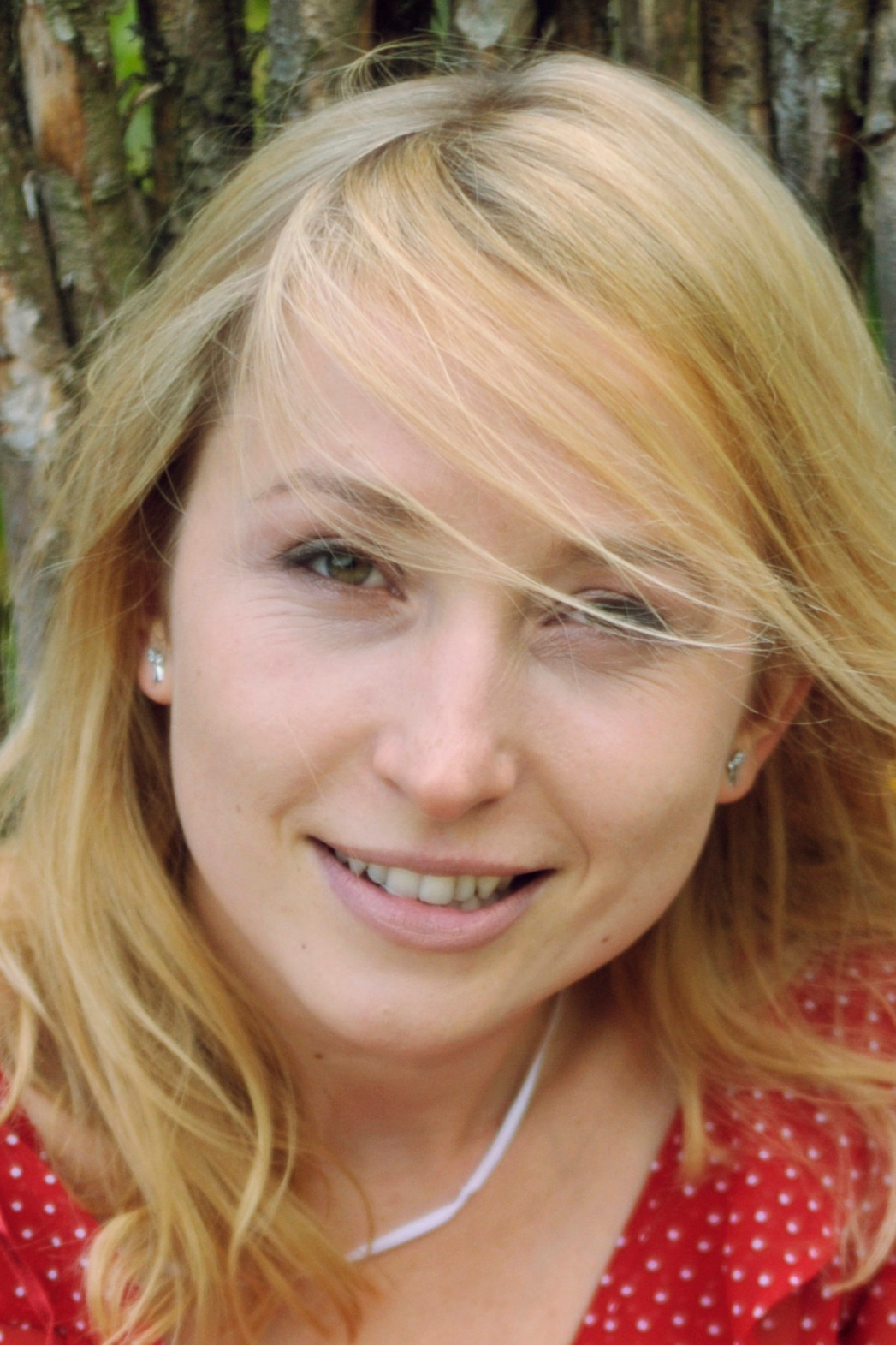 Prelegent: Dr Joanna Rewera – Principal IS Programmer Specialist
Prelegent: Dr Joanna Rewera – Principal IS Programmer Specialist
Temat: Realne zastosowania badań operacyjnych i modeli matematycznych w oprogramowaniu
Abstrakt: Wykład będzie miał na celu zaprezentowanie praktycznych przykładów rozwiązań, które stosują modele matematyczne. Zwrócenie uwagi na to - kiedy je implementować, jak je implementować i jak je testować. Omówienie ich współpracy z architekturą wielowarstwową n-tier aplikacji typu enterprise. Na koniec przedstawione zostaną najczęściej popełniane błędy przez programistów, podczas tworzenia modeli.
Biogram: Pracuje w ABB ISDC w Krakowie. Zajmuje się architekturą systemów informatycznych oraz ich front-endowej implementacji w oparciu o projektowanie UX.
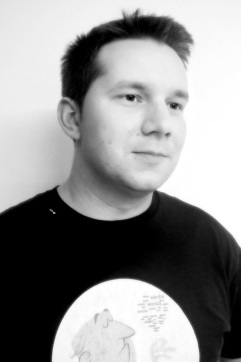 Prelegent: Jakub Druzgała – Principal Software Developer/Software Architect
Prelegent: Jakub Druzgała – Principal Software Developer/Software Architect
Temat: Software craftsmanship — czyli jak wygląda praca programisty
Abstrakt: Krótka rozprawa o tym jak wygląda współczesne podejście do tworzenia aplikacji. Jak to wygląda w dużych i średnich firmach oraz czego się wymaga od developera. W jakim kierunku warto się rozwijać, aby być coraz lepszym programistą. Co pracodawca może mi jako developerowi zaoferować, abym mógł się rozwijać w dobrym kierunku. Opowiem o tym, w jaki sposób pracować z kodem, jak ćwiczyć swój warsztat w pracy i poza pracą. Na koniec przedstawię, jak wygląda praca developera w zespole R&D zajmującym się tworzeniem aplikacji typu WAMS.
Biogram: Związany z ABB ISDC w Krakowie, wcześniej pracował w średniej wielkości firmie IT. Zaczynał jako programista C#, ale w ciągu swojej kariery miał do czynienia z technologiami fornt-endowymi, co uczyniło go wielkim fanem projektowania UX. Zwolennik Resharpera, Clean Code, TDD oraz wszystkich innych rzeczy pozwalających uprościć i przyspieszyć pracę programisty. W pracy oprócz kodowania zajmował się organizowaniem szkoleń/warsztatów z programowania. Obecnie oprócz bycia developrem, zajmuję się projektowaniem architektury w systemie typu WAMS.
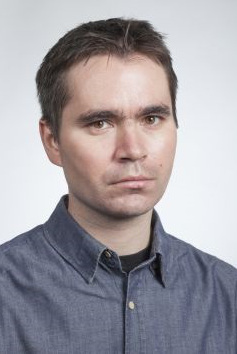 Prelegent: Jarosław Baniewicz – Principal Business Analyst
Prelegent: Jarosław Baniewicz – Principal Business Analyst
Temat: WAMS jako przykład projektu badawczo-rozwojowego
Abstrakt: W swoim wystąpieniu przedstawię, czym jest WAMS (Wide Area Monitoring System) będący rodzajem Smart Grid'a. Na czym polegają związane z nim prace badawcze zwłaszcza w nawiązaniu do rozwiązań software'owych Z jakimi problemami mamy do czynienia. Jakie są wizje i plany przyszłych badań.
Biogram: Pracuje w ABB ISDC w Krakowie. Zajmuje się analizą systemów informatycznych do przesyłania energii elektrycznej pod kątem potrzeb biznesowych. W projekcie odpowiedzialny również za zapewnienie jakości realizowanego systemu.
 Centrum Systemów Informatycznych ABB (Information Systems Delivery Center) jest częścią Grupy ABB – globalnego lidera w dziedzinie technologii energetyki i automatyki. ABB realizuje szereg różnorodnych działań biznesowych, obejmujących swoim zasięgiem wszystkie kontynenty świata. Działając w około 100 krajach i zatrudniając ponad 130 tys. osób, wytycza najwyższe standardy w branży.
W Centrum Systemów Informatycznych ABB w Krakowie i w Łodzi pracuje ponad 300 specjalistów z branży IT. Programiści, analitycy, kierownicy projektów, specjaliści baz danych i projektanci aplikacji internetowych, odpowiedzialni są za funkcjonowanie globalnych systemów komputerowych ABB. Więcej informacji: www.abb.pl/ISDeliveryCenter
Centrum Systemów Informatycznych ABB (Information Systems Delivery Center) jest częścią Grupy ABB – globalnego lidera w dziedzinie technologii energetyki i automatyki. ABB realizuje szereg różnorodnych działań biznesowych, obejmujących swoim zasięgiem wszystkie kontynenty świata. Działając w około 100 krajach i zatrudniając ponad 130 tys. osób, wytycza najwyższe standardy w branży.
W Centrum Systemów Informatycznych ABB w Krakowie i w Łodzi pracuje ponad 300 specjalistów z branży IT. Programiści, analitycy, kierownicy projektów, specjaliści baz danych i projektanci aplikacji internetowych, odpowiedzialni są za funkcjonowanie globalnych systemów komputerowych ABB. Więcej informacji: www.abb.pl/ISDeliveryCenter
2014-05-14
Speaker: Professor Bipin Indurkhya
Title: A Short Introduction to Usability Engineering and UX Design
Abstract:
Usability is a key area in modern engineering design. It is about designing systems and artifacts that are easy to use. It considers perceptual and cognitive abilities of the users, their biases and habits, environmental and contextual factors, cultural and social norms, and so on, to design a product that can be used naturally without having to think about it. It studies various factors that affect user interaction — whether a website, software application, mobile device, robotic system, or any other user-operated product or process — and how to incorporate them in the design from the very beginning.
User Experience is a related topic, which also takes into account emotional aspects of user-artifact interaction.
In this talk I will introduce some aspects of user-centered design with focus on cognitive science and techniques for conducting usability testing (evaluation techniques). We will look at various examples ranging from simple objects like doors, to websites, robots, and services like waiting areas. Though we will not do any specific tasks in this introductory lecture, I expect audience participation and interaction.
Bio: Bipin Indurkhya did his Ph.D. in Computer Science from University of Massachusetts, Amherst (USA). He spent about twelve years teaching at various universities in the US, most of which was at Boston University. After that he was at Tokyo University of Agriculture and Technology, Japan for over eight years, and at IIIT-Hyderabad, India for over six years, where he is still running research projects. Since September 2011, he is affiliated with AGH University of Science and Technology, Kraków, Poland, and also teaches at Jagiellonian University in Kraków.
His current research activities include studying and modeling creativity underlying metaphors and designing creativity-support systems, usability studies involving perceptual and cognitive aspects, and developing IT and robotics tools for assisting cognition and communication for autistic and dyslexic children.
2014-04-16
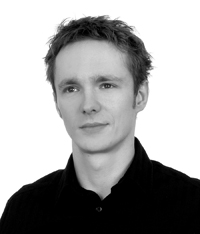
 Prelegent:
Marcin Walewski, Product Development Manager
Prelegent:
Marcin Walewski, Product Development Manager
Temat: Jestem specjalistą, więc męczy mnie siedzenie za biurkiem
Abstrakt: Czy interesująca i pełna nowych wyzwań praca specjalisty to pusty slogan czy możliwy do zrealizowania scenariusz w stabilnej firmie o ugruntowanej pozycji rynkowej. Czy mała grupa szalonych pasjonatów jest w stanie zmienić kurs Titanica? Co się dzieje, gdy inżynierska euforia zderza się z twardą biznesową rzeczywistością. Te i wiele innych kwestii oczami praktyka Quantum software.
Biogram: Marcin z firmą Quantum związany jest od przeszło 9 lat. Obszarem jego działań są nietypowe projekty indywidualne oraz zadania specjalne. Odpowiada za rozwój produktów i technologii informatycznych wspomagających bardzo szeroko pojętą logistykę. Jego działania koncentrują się głównie na automatyzacji procesów dzięki identyfikacji i lokalizacji obiektów. Nuży go siedzenie za biurkiem, więc często wykorzystuje okazje do pracy w terenie. Czasem jest to szalona jazda rosyjskim łazikiem po klifach kopalni, wizyta w maszynowni portu czy próba podłączenia laptopa do silosa z kruszywem.
2014-03-12

 Prelegent:
Michał Cyrek, Kierownik Działu IT, Onet
Prelegent:
Michał Cyrek, Kierownik Działu IT, Onet
Temat: Jak narzędzia oparte o Big Data podnoszą efektywność zarządzania treścią w największym w Polsce portalu internetowym?
Prezentacja: Prezentacja online
Abstrakt: Zaprezentuję sposób w jaki w Onecie wykorzystujemy dane do budowania produktów i optymalizacji procesów oraz jaka jest wizja Big Data w Grupie Onet. Opowiem o historii raportowania, obecnych projektach i obszarach w których planujemy się rozwijać w przeciągu następnych 12 miesięcy. Zaprezentuję kilka unikalnych narzędzi, wykorzystywanych w codziennej pracy przez wydawców, redaktorów, managerów, administratorów jak i developerów portalu. Na koniec wreszcie przedstawię wyzwania z którymi obecnie się mierzymy, tak aby dać Państwu potencjalną szansę na ich rozwiązanie.
Biogram: Absolwent Wydziału EAIiE AGH w Krakowie. Od sierpnia 2006 związany z portalem Onet.pl. Początkowo jako programista/projektant systemów informatycznych w zespole zajmującym się budowaniem hurtowni danych, a od 2009 na stanowisku Kierownika Działu IT. Obecnie poza zarządzaniem kilkunastoosobowym zespołem programistycznym zajmuje się kształtowaniem architektury portalu (w ramach Architecture board), oraz w Scrumowej roli Product Ownera odpowiadam za rozwój Platformy BigData.
2014-01-15
Prelegent: Dawid Ostrowski, Developer Relations Program Manager, Google
Temat: Praktyczne wykorzystanie chmury Google
Abstrakt: Podczas prezentacji przedstawione zostaną najważniejsze produkty Chmury Google oferowane programistom. Szczególny nacisk zostanie położony na Google App Engine oraz Google BigQuery. Google App Engine pozwala na uruchamianie aplikacji internetowych w pełni zarządzanym, skalowalnym środowisku chmurowym. Dostępne są 4 środowiska uruchomieniowe (Java, Python, PHP, Go), a szereg wbudowanych usług umożliwia programiście skupienie się na jak najlepszym stworzeniu aplikacji, a nie na - niekiedy żmudnym - zarządzaniu skalowalnością. Google Big Query to narzędzie do interaktywnej analizy dużych zbiorów danych. Dzięki BigQuery, zapytania użytkownika kierowane do zbiorów osiągających setki milionów rekordów mogą zwracać wyniki wciągu kilku sekund, a to wszystko przy zachowaniu pełnego skanowania tabel i bez potrzeby uprzedniego tworzenia indeksów.
(opcjonalnie w zależności od przydzielonego czasu) Po prezentacji, będzie możliwość wypróbowania omawianych technologii pod okiem prowadzącego.
Biogram: Dawid od wielu lat jest wielbicielem technologii Google, doświadczonym developerem i trenerem Java, który dołączył do Google aby pracować w miejscu, gdzie najzdolniejsi ludzie współpracują z najbardziej innowacyjnymi maszynami. Jego celem jest sukces polskich developerów w tworzeniu aplikacji i biznesów w oparciu o produkty i usługi Google. Zanim dołączył jako Program Manager do zespołu Developer Relations, pracował jako trener i programista freelancer w projektach różnej wielkości (od małych kilkuosobowych startupów, po najwiekszych graczy na rynku) w Polsce, USA, Niemczech, Belgii oraz Holandii. W wolnym czasie lubi grać w squasha i podróżować.
2014-01-08
Prelegenci:
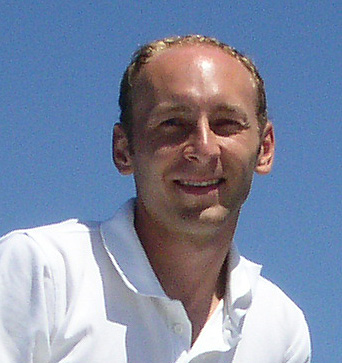 Marcin Kapusta. Dyrektor działu aplikacji. i Michał Rykiert. Konsultant.
Marcin Kapusta. Dyrektor działu aplikacji. i Michał Rykiert. Konsultant.

 Temat:
WIELKOŚĆ ma znaczenie. Wyzwania architektury aplikacji rynku Enterprise
Temat:
WIELKOŚĆ ma znaczenie. Wyzwania architektury aplikacji rynku Enterprise
Abstrakt: Co w praktyce oznacza tworzenie oprogramowania dla dużych firm. Bazując na doświadczeniach firmy WEBCON z ostatnich lat, w tworzeniu i wdrażaniu systemów w dużych polskich przedsiębiorstwach, przedstawimy najważniejsze wyzwania dla aplikacji rynku Enterprise. Na co warto zwrócić uwagę w poszczególnych etapach tworzenia oprogramowania? Jakie błędy najczęściej popełniają początkujący programiści? Odpowiemy na te pytania z punktu widzenia działu developerskiego. Mało teorii, dużo praktycznej wiedzy popartej przykładami z życia firmy i naszych klientów.
Biogram: Marcin Kapusta. Dyrektor działu aplikacji. Od blisko 13 lat zaangażowany w tworzenie systemów informatycznych, głównie w technologiach Microsoftu. Pasjonat .NET, aplikacji mobilnych i gadżetów. Brał udział w tworzeniu jednego z największych polskich systemów ERP. Od blisko 5 lat związany z firmą WEBCON, gdzie zajmuje się projektowaniem systemów DMS i BPM, architekturą, kierowaniem działem produkcji.
Michał Rykiert. Konsultant. W WEBCON odpowiedzialny za konsulting biznesowy i działania marketingowe. Autor szeregu artykułów dotyczących tematyki Business Process Management oraz pierwszego w Polsce bloga o technologii Optycznego Rozpoznawania Znaków (OCR). Prywatnie maniak gier komputerowych, kolekcjoner koszulek NBA i pasjonat historii II Wojny Światowej.
Spotkania RnD 2013
2013-11-20
Speaker:
Prof. Garrison W. Cottrell,
Gary's Unbelievable Research Unit, Computer Science & Engineering Department,
University of California, San Diego La Jolla, CA, USA
Topic: SUN: A Model of Visual Salience Using Natural Statistics… and its use in object and face recognition (NIMBLE)
Abstract: As a result of having a foveated retina, we actively move our eyes in order to direct our highest resolution of visual processing towards interesting things. In fact, we move our eyes about three times a second; it is a decision we make about 172,000 times a day. How do we decide where to look?
Most computational theories of overt visual attention assume there is a salience map that is computed from both exogenous and endogenous sources. Exogenous sources of salience tend to be visually “busy” locations in the world. Endogenous sources of salience derive from task-relevant considerations, such as those involved in my most vexing task of the day, finding my glasses. We have developed a Bayesian model of salience that naturally leads to components corresponding to these two influences. Our model differs from most other models in assuming that for exogenous influences on salience, the statistics of the visual world are learned through experience and then applied to new stimuli, as opposed to being computed directly from new stimuli. The model has been applied to standard datasets and can account for eye fixations as well or better than any other model in the literature, is able to be computed in real time due to its computational efficiency, and is able to explain several visual search asymmetries.
People, unlike computer vision systems, can recognize a large number of objects and faces in a robust manner, in a variety of lighting conditions and with partial views. We have developed a biologically-inspired visual classifier called NIMBLE, for NIM with Bayesian Likelihood Estimation, that uses fixations based upon a salience map. The salience map and the information extracted from each fixation use the same features learned in an unsupervised way from natural images. An object is learned by storing the fixations and labels in an exemplar-based memory. At recognition time, a salience map is again generated and the extracted fixations compared with those in memory using Bayesian updates. The model parameters were tuned on Birds and Butterflies datasets, and then applied unchanged to Faces, Objects, and Flowers. This is in sharp contrast to most computer vision systems, which are usually tuned for the particular application. The model achieved state of the art performance for systems using a single feature type. Our approach achieves 78.5% accuracy on Caltech-101 and 75.2% on the 102 Flowers dataset when trained on 30 instances per class and it achieves 92.7% accuracy on the AR Face database with 1 training instance per person. The same features and parameters are used across these datasets to illustrate its robust performance.
Short bio: Garrison W. Cottrell is a Professor of Computer Science and Engineering at UC San Diego. He is Director of the Interdisciplinary Ph.D. Program in Cognitive Science at UCSD, and the Director of the Temporal Dynamics of Learning Center, an NSF-sponsored Science of Learning Center involving 40 PI's at 17 institutions in three countries. He is also a founding PI of the Perceptual Expertise Network.
Professor Cottrell's main interest is Cognitive Science, in particular, building working models of cognitive processes and using them to explain psychological or neurological processes. In recent years, he has focused upon unsupervised feature learning (modeling precortical and cortical coding), face & object processing, visual salience, and visual attention. He has also worked in the areas of modeling psycholinguistic processes, such as language acquisition, reading, and word sense disambiguation. He received his PhD. in 1985 from the University of Rochester under James F. Allen (thesis title: A connectionist approach to word sense disambiguation). He then did a postdoc with David E. Rumelhart at the Institute of Cognitive Science, UCSD, until 1987, when he joined the CSE Department.
2013-06-19
Speaker:
Dr Martin Atzmüller,
Knowledge and Data Engineering Group,
Universität Kassel, Germany
Topic: Mining Social Interaction Networks
Abstract:
The emergence of ubiquitous and social computing computing has started to create new environments consisting of small, heterogeneous, and distributed devices that foster the social interactions of users in several dimensions. According interaction networks capturing such social interactions can then be analyzed based on the collected data, e.g., co-location information, or other context information. This talk focuses on data mining on such interaction networks, and discusses examples in the context of real-world systems.
Short bio:Dr. Martin Atzmueller is a senior researcher at the University of Kassel. He studied Computer Science at the University of Texas at Austin (USA) and at the University of Wuerzburg (Germany) where he completed his MSc in Computer Science. Martin earned his PhD from the University of Wuerzburg, and his Habilitation from the University of Kassel. His research areas include data mining, social computing, mining social media, web science, machine learning, and natural language processing.
2013-06-12
 Prelegenci: Kamil Stanuch – co-founder/CEO, Mateusz Pluta – co-founder / Android Developer, Kamil Burczyk – co-founder / iOS Developer
Prelegenci: Kamil Stanuch – co-founder/CEO, Mateusz Pluta – co-founder / Android Developer, Kamil Burczyk – co-founder / iOS Developer
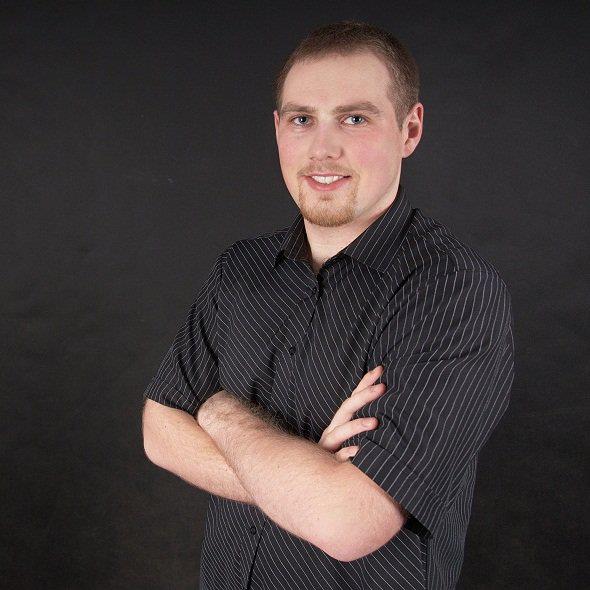
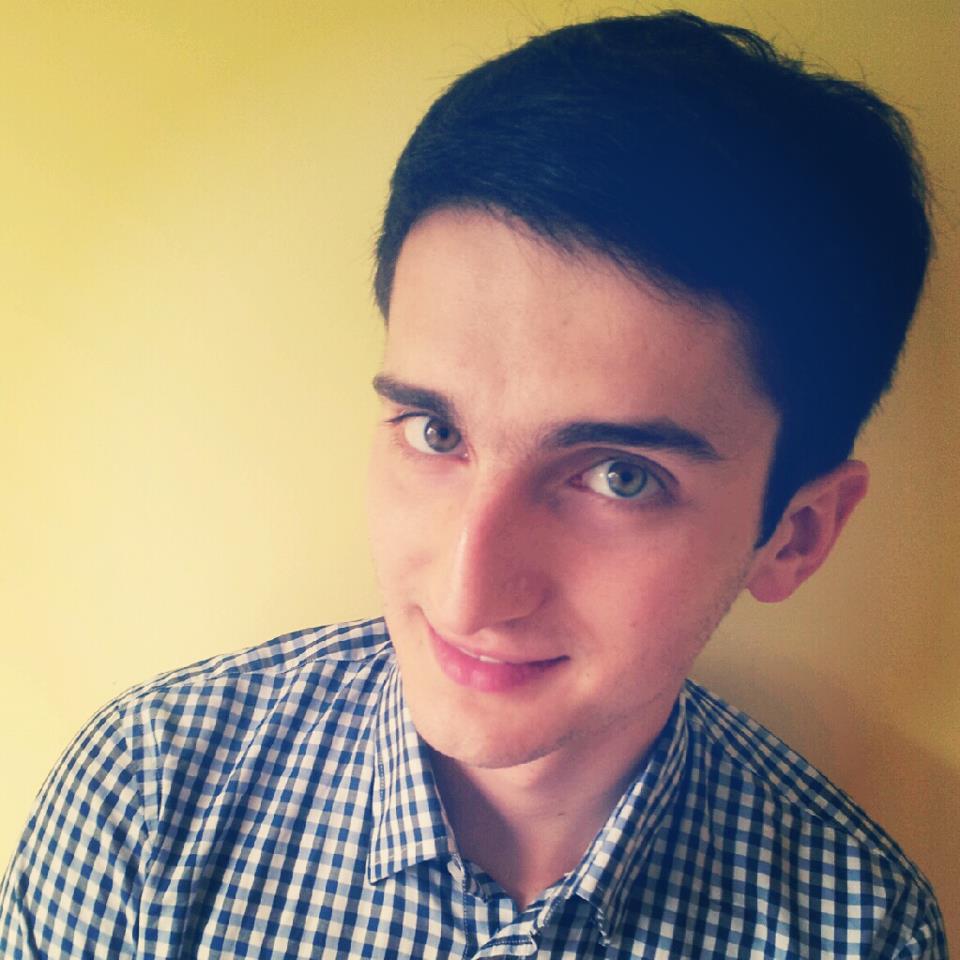
 Temat: Od inkubatora do Doliny Krzemowej
Temat: Od inkubatora do Doliny Krzemowej
Abstrakt: W czasie prelekcji opowiemy naszą historię, jak w ciągu roku z firmy w inkubatorze przedsiębiorczości staliśmy się startup’em, pozyskaliśmy inwestora i pojechaliśmy do Doliny rzemowej. Oprócz tego chcemy podzielić się kilkoma lekcjami, jakie wynieśliśmy w tym czasie:
- Dlaczego pomysł jest wart 1 zł + VAT?
- Dlaczego nie należy czytać biografii Jobsa?
- Dlaczego startup to nie jest mała firma?
- Dlaczego nie należy być innowacyjnym za wszelką cenę?
- …i jeszcze kilka.
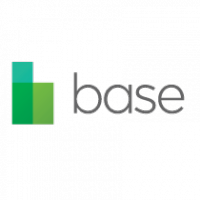 Prelegent: Marcin Bunsch, R&D Manager, http://getbase.com/
Prelegent: Marcin Bunsch, R&D Manager, http://getbase.com/
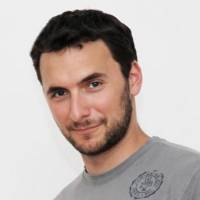 Temat: Life in a startup
Temat: Life in a startup
Abstrakt: How is programmer's life in a startup different from that of in a corporation? How does startup environment and culture affect your skills and personal development? Based on his experience of building product a product used by thousands of users worldwide and building R&D team of over 60, Marcin will share his perspective and lessons learned in the process of building Base CRM (getbase.com) - the first Post-PC CRM.
Biogram: Head of the Post-PC team at Base whose greatest passion is coding. Usually seen researching awesome new solutions for use in Base. When not doing that, he's probably working on some crazy code that you can find on github: https://github.com/marcinbunsch
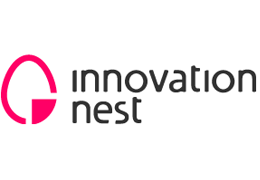 Prelegent: Marcin Szeląg, Partner w Innovation Nest
Prelegent: Marcin Szeląg, Partner w Innovation Nest
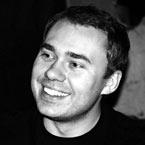 Temat: Lessons Learned - 10 Lat w startupach
Temat: Lessons Learned - 10 Lat w startupach
Abstrakt: Czym, jak i z kim budować te startupy, czyli pare słów o narzędziach, parę o procesie, parę o dobrych zespołach i parę o modelu biznesowym. Podczas prezentacji dowiemy się również jak można pozyskać dofninansowanie, a takżę jak najlepiej korzystać ze startup community nie tylko w Polscie, ale i w Silicon Valley.
Biogram: Startup ewangelista. Skupiony na SaaS. Mentoruje i pomaga z modelami biznesowymi, budowaniem ruchu, monetyzacją. W Innovation Nest pracuje ze startupami nad podbojem świata. Wcześniej w Gruner und Jahr (Pixelate Ventures) dowodził produktami internetowymi. Inwestor w notatek.pl. Dumny tata Antka.
 Prelegent: Paulina Mazurek, Program Manager, Google Krakow
Prelegent: Paulina Mazurek, Program Manager, Google Krakow
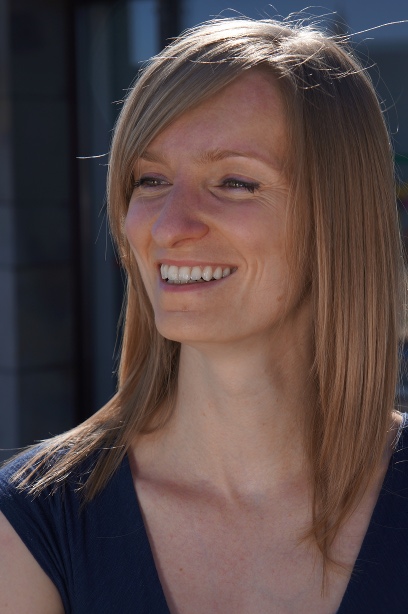 Temat: Google for Entrepreneurs Kraków
Temat: Google for Entrepreneurs Kraków
Abstrakt: Dlaczego powstała inicjatywa GEK, czym jest i jak się wpisuje w działalność Google i lokalną społeczność. Dowiemy się co już w ramach GEK udało się zrobić, jakie międzynarodowe konkursy są dostępne dla polskich startupów oraz w jakim wydarzeniu, warsztatach, czy szkoleniach organizowanych w GEK można i warto wziąć udział.
Biogram: Paulina Mazurek pracuje jako Program Manager w centrum badawczo-rozwojowym Google w Krakowie. Tytuł magistra uzyskała na Uniwersytecie Jagiellońskim. Jeszcze w czasie studiów zaczęła pracować dla firmy Motorola, obejmując kolejne stanowiska administracyjne, aż do czasu, kiedy dołączyła do Google, aby pomóc zbudować krakowski oddział firmy. Obecnie, jako Program Manager odpowiada za kilka projektów, między innymi Google for Entrepreneurs in Krakow, w skrócie GEK.
2013-05-22
- Marcin Majcherkiewcz, archiekt systemów, magister telekomunikacji
- Jacek Rybicki, kierownik projektów, magister informatyki
Temat: Duże projekty informatyczne w praktyce
Abstrakt: Każda z pięciu części warsztatu będzie omawiała pewien istotny problem z punktu widzenia zarządzania dużymi produktami informatycznymi. Poprzez wprowadzanie coraz bardziej skomplikowanych wyzwań będziemy w naturalny sposób odpowiadać na pytania „po co?” stosować określone praktyki metodyczne i rozwiązania narzędziowe. Ważnym elementem dużych systemów informatycznych jest jakość tworzonego oprogramowania. W projektach tworzonych przez dziesiątki a czasami setki programistów, spójne metody pracy oraz uzgodnione zasady kontroli poprawności kodu są kluczowe. Oprogramowanie zawsze będzie zawierało błędy. Można je minimalizować, jednak gdy się pojawią - bardzo ważne jest czytelne i zrozumiałe zarządzanie cyklem ich życia. Mamy ambicję dopasować do siebie fragmenty tej układanki i pokazać uczestnikom rozwiązania, które mogą spotkać w pracy.
2013-04-17
Speaker: prof. Marcin Grzegorzek, Research Group for Pattern Recognition, Universitat Siegen, Germany
Topic: Adaptive Learning of Context for Pattern Recognition
Abstract: Existing pattern recognition approaches can be roughly divided into two categories. The first ones (scientific methods) are very generic and methodologically advanced, but they feature limited robustness in real-world environments and, therefore, cannot be applied in concrete application domains without significant and expensive modifications. The second ones (industrial systems) solve very concrete problems from concrete application domains taking into consideration problem-specific features and, therefore, cannot be applied to other pattern recognition tasks without significant and expensive re-engineering.
In this talk the concept of pattern recognition approaches will be presented that, on the one hand, remain generic and methodologically universal, but on the other hand, make use of domain-specific knowledge modelled as ontologies and can adapt to specific application domains. It will be explained for Marcin Grzegorzek's current research fields, namely object recognition, multimedia retrieval, behavioural biometry, as his developments in this areas share exactly these two commonalities. Firstly, they show how generic pattern recognition systems can benefit from context information (domain knowledge), if it is available. Secondly, they adaptively optimise the data representation in runtime in terms of its discriminative properties.
Short bio: Marcin Grzegorzek is Assistant Professor at the University of Siegen heading the Research Group for Pattern Recognition in the Institute for Vision and Graphics. Currently, he is also Fellow of the Think Tank “Stiftung Neue Verantwortung” in Berlin where he leads the project “Cognitive Robotics”. Furthermore, he is Principal Investigator in the Research Training Group 1564 “Imaging New Modalities”. He received his Master's Degree from the Silesian University of Technology in Gliwice in 2002 and PhD with distinction from the University of Erlangen-Nuremberg in 2007. From 2006 to 2008 he was Research Assistant at the Queen Mary, University of London. From 2008 to 2010 he worked as Lecturer for the University of Koblenz-Landau. He was General Chair of the SAMT 2010, the 5th International Conference on Semantic and Digital Media Technologies. Moreover, he is Guest Editor of the MTAP (Multimedia Tools and Applications) Journal and acts as a Secretary in the Executive Board of the SMaRT (Semantic Multimedia Research and Technology) Association. His research interests include multimodal object recognition and scene analysis, semantic multimedia analysis and retrieval, as well as behavioural biometry and medical image processing. He is author and coauthor of more than 40 papers.
2013-04-10
Prelegenci:
- Konrad Siatka, Research & Business Development, Vice President Software Mind SA
- Paweł Machalski, Business Development Manager
Agenda:
O Software Mind - My się rozwijamy, a Ty?
- Co to jest Software Mind?
- Co robimy ciekawego „day-by-day”?
- Dlaczego warto z nami pracować?
- Co oferujemy studentom?
- Co oferujemy pracownikom?
O Business Intelligence
- Wprowadzenie
- Business Intelligence - wczoraj i dziś
- Hurtownie danych – czy ta konstrukcja ma jeszcze przyszłość?
- Najnowsze trendy - business discovery
- Prezentacja platformy narzędziowej klasy business discovery - QlikView
2013-03-13
- Krzysztof Szczecki, R&D Department Manager
- Jarosław Karpiak, Production Manager
Temat: Procesy biznesowe w praktyce
Abstract: W ostatnim czasie procesy biznesowe zyskują coraz większą popularność jako narzędzie pozyskiwania wiedzy oraz organizacji i automatyzacji pracy w przedsiębiorstwie. Kodeksy dobrych praktyk i wzorce procesów z zakresu zarządzania usługami informatycznymi i telekomunikacyjnymi takie jak ITIL oraz eTOM stały się wyznacznikiem standardu jakości kierowania przedsiębiorstwem w wielu kluczowych obszarach np. planowanie, projektowanie, wdrażanie, utrzymanie i ciągła poprawa usług. Firma Comarch S.A. bierze udział we wdrożeniach oprogramowania wspierającego działania operacyjne kluczowych firm telekomunikacyjnych na świecie. Częścią tego oprogramowania jest OSS Process Management. Moduł ten odpowiada za zarządzanie procesami biznesowymi, wspomaga ich modelowanie, orkiestrację i automatyzację. Procesy przygotowywane w czasie wdrożeń pokrywają krytyczne obszary działalności przedsiębiorstwa telekomunikacyjnego takie jak Service Assurance, Network Planning, Contract Negotiation. W efekcie procesy dostępne w produkcie Comarch S.A. realizują niemal w pełni mapę procesów eTOM. Implementowane procesy w dużym stopniu zintegrowane są z aplikacjami firm trzecich i zewnętrznymi interface’ami napisanymi w różnych technologiach. Operacje na procesach mogą być wzbudzane m. in. poprzez interface’y SMSowe, e-mailowe, web service, RMI. W tak heterogenicznym środowisku rodzą się problemy i wyzwania, które nie występują w przypadku implementacji prostych procesów w ramach jednego przedsiębiorstwa. W zupełnie nowym świetle jawi się kwestia wersjonowania i utrzymania procesów długoterminowych, których interakcja z zewnętrznymi systemami i innymi procesami wymaga wyjątkowo delikatnego i uważnego traktowania tematu aktualizacji definicji. Równie niebanalny staje się problem anulowania zadań wykonywanych przez użytkownika jak i anulowania całego procesu. Prezentacja ma na celu przedstawienie podstawowych informacji o procesach biznesowych. Jaki jest ich cel i jakie są korzyści płynące z ich wdrożenia. Będzie mowa o sposobie modelowania i implementacji procesów oraz poruszone zostaną praktyczne problemy jakie napotkano w trakcie ich wdrażania. Omówiona zostanie architektura i stos technologiczny użyty w produkcie OSS Process Management. Na koniec przedstawione będą otwarte problemy, nad którymi trwają obecnie prace w zespole rozwijającym produkt OSS Process Management firmy Comarch S.A.
2013-03-06
Speaker: Professor Bipin Indurkhya
Topic: Models, simulations and experiments, and their role in artificial intelligence
Abstract: In this lecture, we will examine the role of models, simulations and experiments in science. Using several examples, we will look at the nature and limits of thought experiments, and how observations, experiments and theories interact together to give us a scientific world view. We will examine the implications of this approach to Artificial Intelligence, and its ability to model or implement mind.
Short bio: Bipin Indurkhya did his Ph.D. in Computer Science from University of Massachusetts, Amherst (USA). He spent about twelve years teaching at various universities in the US, most of which was at Boston University. After that he was at Tokyo University of Agriculture and Technology, Japan for over eight years, and at IIIT-Hyderabad, India for over six years, where he is still running research projects. Since September 2011, he is affiliated with AGH University of Science and Technology, Kraków, Poland, and also teaches at Jagiellonian University in Kraków.
His current research activities include studying and modeling creativity underlying metaphors and designing creativity-support systems, usability studies involving perceptual and cognitive aspects, and developing IT and robotics tools for assisting cognition and communication for autistic and dyslexic children.






